SHOP ROUND TABLE THE WORD According to SETH GODIN

SKATING’S GREAT DIVIDE
 The
The
gang at Motion Boardshop Seattle, Washington PHOTO: TUFFER
TRADE SHOW Highlights: AGENDA SURF EXPO ISPO


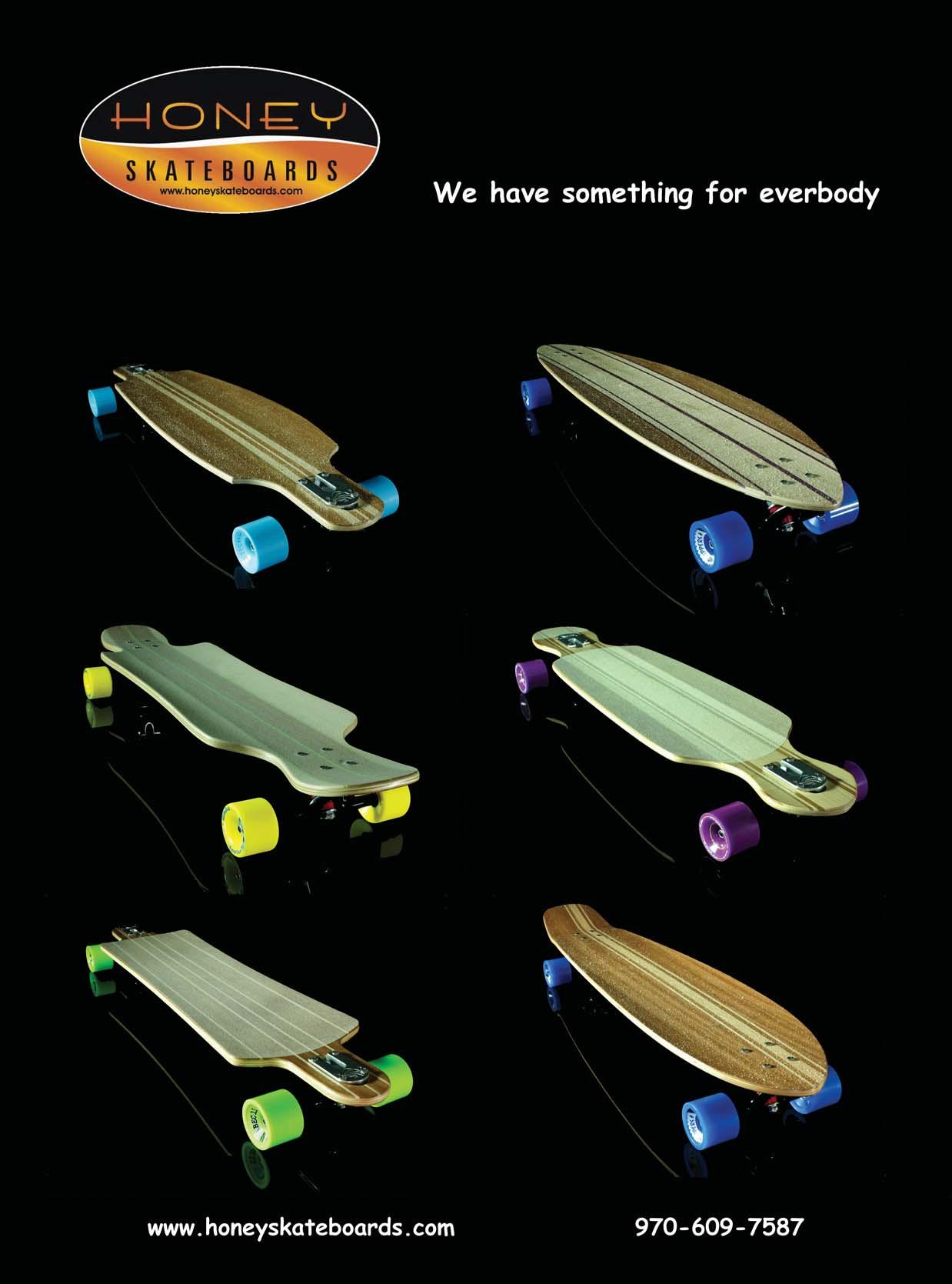

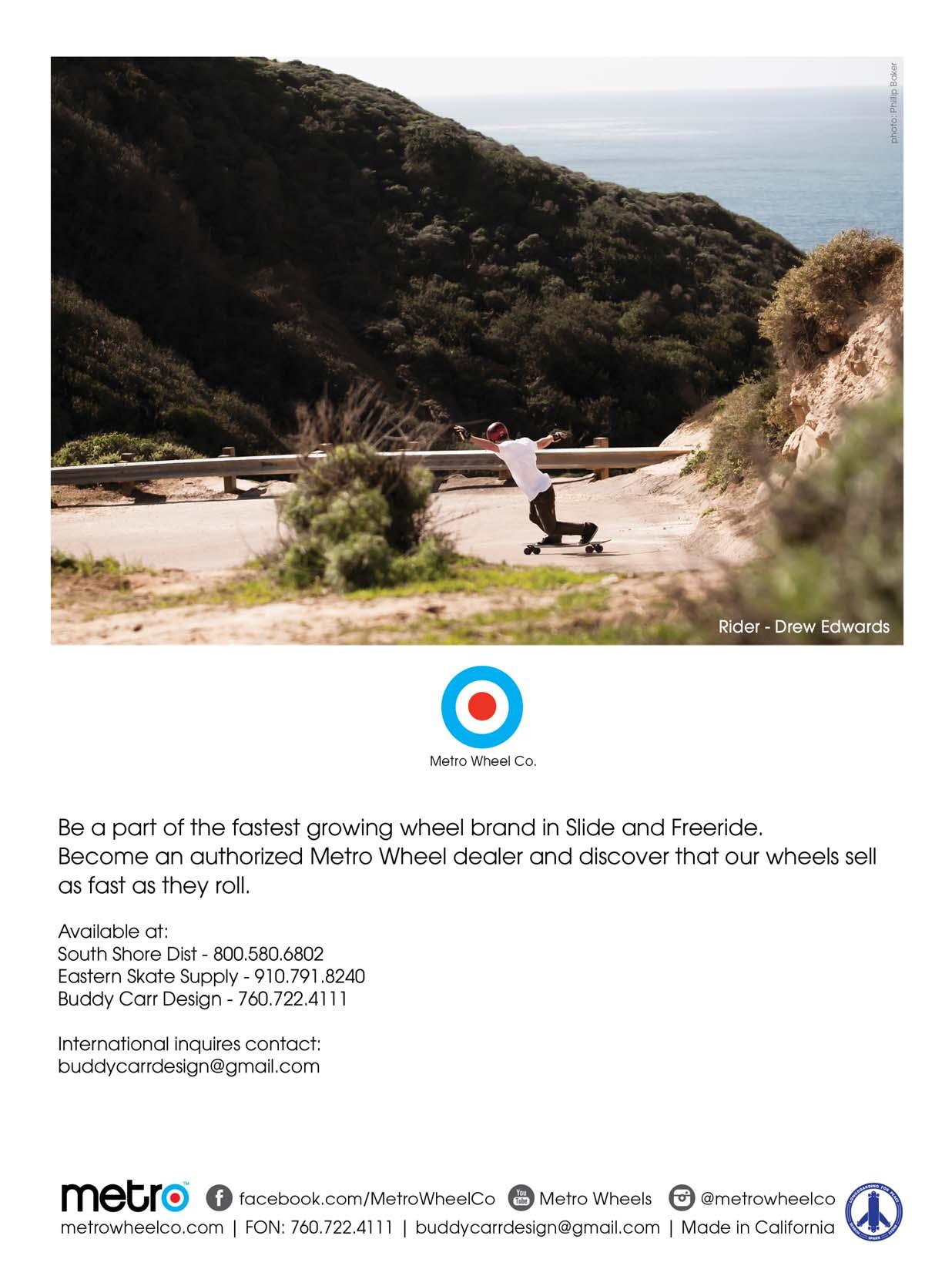
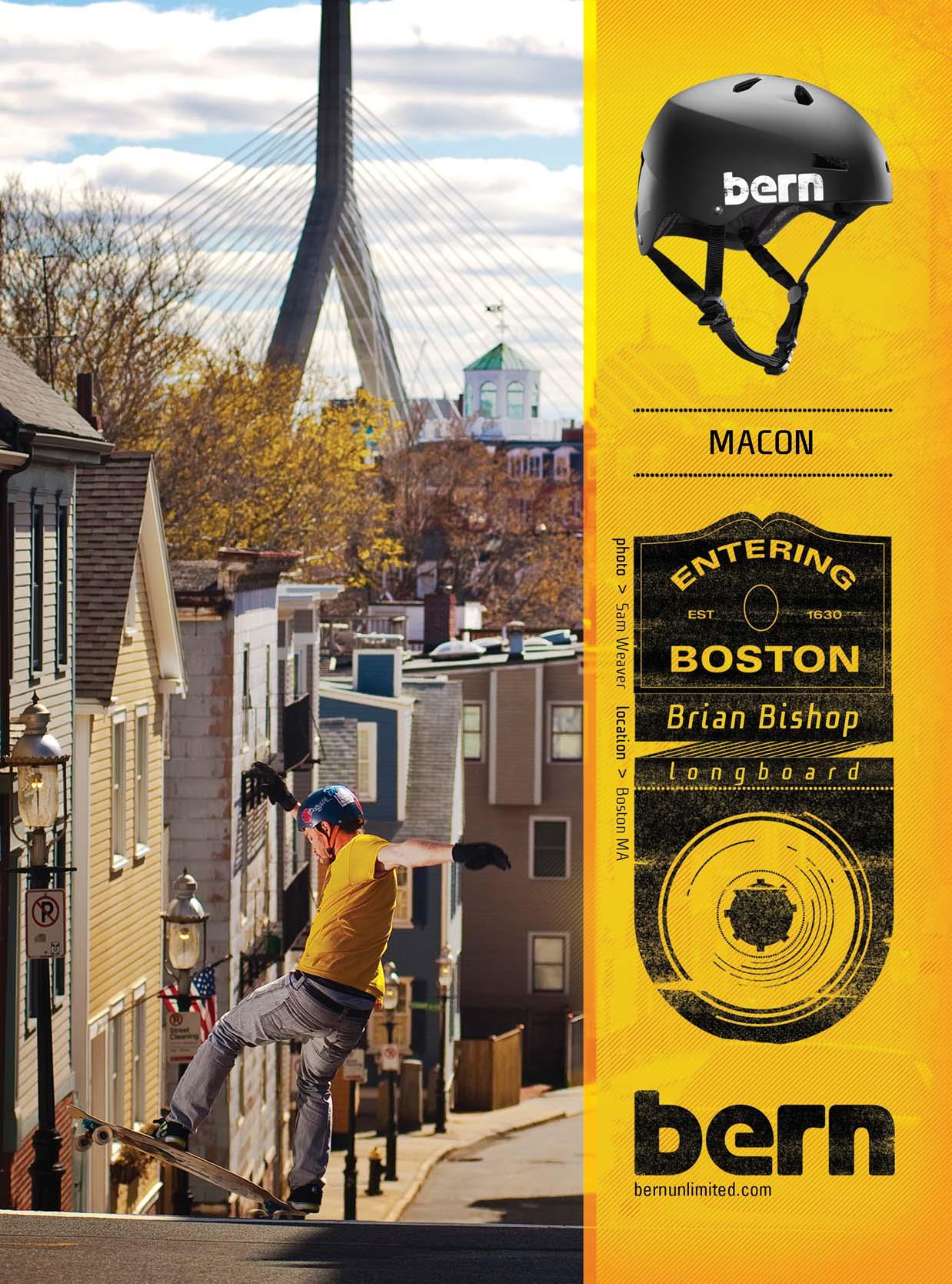
10 GREETINGS, RETAILERS!
The cobwebs are off … time to get cracking on a whole new season of fun!
12 BRASIER ON THE BIZ
Mark Brasier is back, and he's got hotcakes on his mind.
13 EVENT CALENDAR
Dozens of events in a nice, easy-to-read list. Surely there is something happening near you.
14 TRADE SHOW HIGHLIGHTS
AXS hit Surf Expo, ISPO (34) and Agenda (46). We are racking up the air mile points in record time.

20 SHOP TALK
We asked five shops what was on their mind. They gave us some very thought-provoking answers.

26 INDUSTRY INSIGHTS
More than 4,000 longboarders responded to our latest survey. Behold! Some detailed analysis.

36 LONGBOARD THERAPY
Amazing things can be done with longboards.

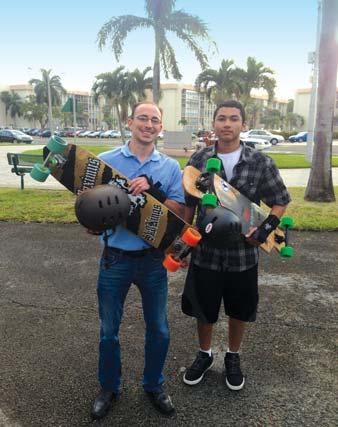
38 BUD’S COLUMN
Skateboarding's great divide and what can be done to bridge it.
40 IASC UPDATE
We asked IASC kingpin Josh Friedberg what was happening. He filled two pages!
42 MARKETING INSIGHTS
In the world of marketing, Seth Godin is a true legend. Luckily for you, we have an exclusive interview.
Visit

us online at axsgear.com
updates! CONTENTS SPRING 2013, Vol. 2 No. 2 AXS LONGBOARD RETAILER | SPRING 2013 8 34 46 36 42 26
Daily

GREETINGS, RETAILERS AND SKATE COMPANIES!
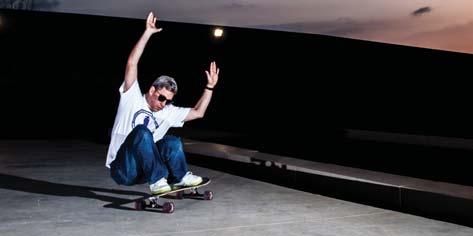

WELCOME TO OUR SPRING EDITION. This issue we are proud to take you deep into the Longboard Embassy at ISPO 2013. Held every year in Munich at the most massive convention space we’ve ever seen, ISPO is a sight to behold. If you weren’t able to attend the show, don’t worry, we’ve got a full report, complete with dozens of photos. We also have highlights from Surf Expo and Agenda.
We know that many of you have never heard of marketing guru Seth Godin. It is our sincere hope that after you finish reading our feature about his work you’ll be motivated to try some out some of his ideas.
As retailers emerge from the long, drawn-out days of winter, many wonder what the next several months will bring. These are indeed challenging times. The truth is that when it comes to specialty retailing, only the most creative and nimble businesspeople will succeed. We hope that the ideas and insights you find in AXS inspire you to get more creative with your business. With the change of the seasons, there is a sense of something new emerging and a promise of new opportunities. Sure, we’re unabashedly optimistic, but after enduring several months of cold, snow and ice, can you blame us?
Best wishes,
Michael Brooke & Rick Tetz Publishers
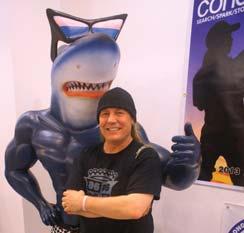
Publishers/Editors
Michael Brooke | Rick Tetz
Art Director
Mark Tzerelshtein | markintoshdesign.com
Copy Editor Jonathan Harms
Contributing Editors
Bud Stratford | Mark Brasier
David Allison | Mark Schmid | Joey Bidner
Address: 1136 Center Street, Suite 293 Thornhill, ONTARIO L4J 3M8, Canada Ph.: 905-738-0804
AXSGEAR.com
AXS Longboard Retailer Magazine is published as a joint venture between North of La Jolla Inc. and AXSgear.com.


Publisher’s permission is required before reproducing any part of this magazine. The views and opinions expressed in AXS Longboard Retailer Magazine are not necessarily those of the publishers.
Complimentary copies of this magazine are available to all longboard retailers in North America. Please email mbrooke@axslongboardretailer.com or rtetz@axslongboardretailer.com
WELCOME TO AXS SPRING 2013
Michael Brooke. Photo: Yаhav Trudler
Rick Tetz
Yoni Ettinger
Photo: Yahav Trudler
AXS LONGBOARD RETAILER | SPRING 2013 10
Brandon Tissen. Photo: Andrew Jimenez
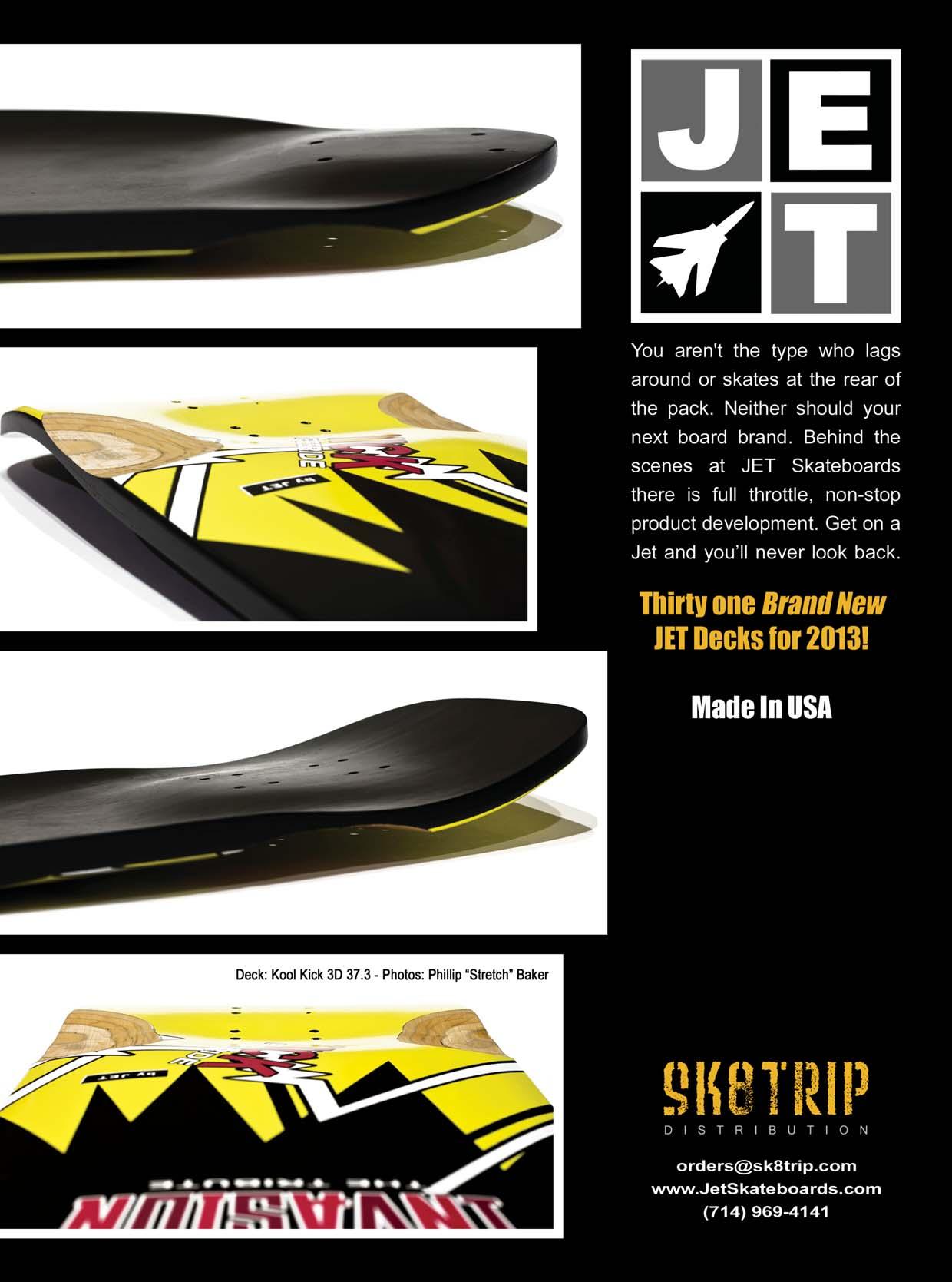
SUPPLY AND DEMAND
My son is studying business in Grade 9. He asked me to help him out with the chapter on supply and demand. I’ve got my Grade 9 (toughest two years of my life), so I figured I could relate it back to the world of skateboarding and try to simplify into terms he would get. I mean, I’ve seen the good and the bad applied to the very basics of supply and demand, so this should be pretty easy.
With eager and lofty ambition I dove into his textbook and started to explain supply and demand and how it related to brand, product and category life cycles.
Pretty straightforward, right? I should be able to step up and help him navigate through this fluffy stuff. Marketing and Brand Management 101: As supply increases, demand decreases; as prices rise, demand declines. The charts with an X and Y axis are etched in our memories, and with so many years of experience in management teams shaping the brands today, this has to be ingrained in all business planning.
So there I was, working through the chapter, doing pretty well explaining the opening basics to my son. Then the charts popped into sight: Life Cycle charts taking you through the various phases of the Cycle Lifelines. There was a Traditional Cycle Chart, a Fad Cycle Chart, a Trend Cycle Chart and a Niche Cycle Chart — each chart with its own distinct curve over time moving through the Launch, Growth, Maturation and Decline phases.
It got me thinking. This is everyday thinking, considerations we put into play as we chart the short-, mid- and long-term direction and vision for the business. The biggest callout was just how steep the decline phase is and how quickly it creeps up.
How can something so simple, based on sound fundamental concepts, lose its relevance in our small, tight business? Are we so entrenched in the day-to-day, surrounded by high-fiving yes staff, oblivious to the clear vital signs that we are then unable to diagnose accurately? Without that — without an honest, brutal diagnosis — what you are about to do, what decisions and course you take, will not serve the business best throughout the phases of the real life cycle we are on.
LAUNCH PHASE
In the Book
Best characterized as the period with little to no revenue and relatively high startup costs. The early embracers and adopters support across all functional and commercial points. These are the companies and people you won’t forget.
There is immense ownership, empowerment and accountability for all involved. Credit is shared proportionally, rewards as well, and equity begins to build all around the organization.
The most fun and trying times all in one package. So much unknown! Pioneering. Low sales volumes and demand building go hand in hand as early adopters sense that they are a part of something that will grow and that all will participate in the upside.
In the Board Room
No clear distinction formed at this point with respect to which cycle the brand is heading toward. Much of it dependent on the strategies taken into the early stages of the Growth Phase. Humility is still strong, and while the business is percolating, business interests are put ahead of personal ones — so far.
GROWTH PHASE
In the Book
It’s what you always wanted. Finally strong sales and mainstream market acceptance! Everything you produce turns to gold. You can’t go wrong, and if you do the growth covers up for the mistakes. Our confidence is at an all-time high!
Costs are now coming into scale and profitability becomes a viable position. There is capital available to build on this momentum.
Brand awareness is on the rise, the category is becoming commercially viable and consumer demand is growing.
Positioning in the market now becomes critical based on the objectives moving into the next phase.
The ability to reach more consumers is strengthened as media and other communication vehicles spread the word and invite more consumers to discover your brand, product and the category.
Only the strongest thrive throughout this period.
This growth happens swiftly, without much warning other than a few vital signs.
Market share and positioning become critical in this phase.
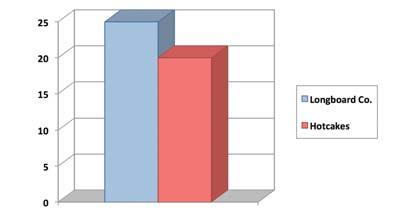
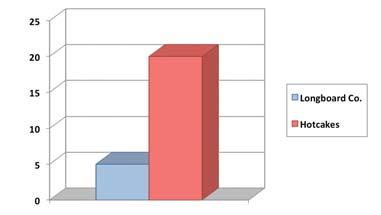
In the Board Room
Based on the growth curve, by now it becomes pretty clear which product life cycle your company is on. You’ll need to terms with which cycle you are on. Take time to reflect accurately your status. Only then can actions begin to impact the business. Until the patient is diagnosed accurately, no amount of incorrectly prescribed medicine will help. This is heightened in the skate world, where we are all too familiar with the association of being a fad or trend. Further challenging is that we are all reading and schooled from the same circle of data, with little or no reach for outside, nonbiased opinions.
AXS LONGBOARD RETAILER | SPRING 2013 12 NEW RETAIL TREND By Mark Brasier
MATURITY PHASE
In the Book Sales growth has begun to slow — the rate of slowing dependent entirely on the cycle you are on.
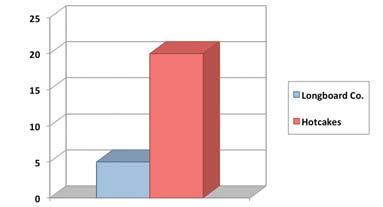
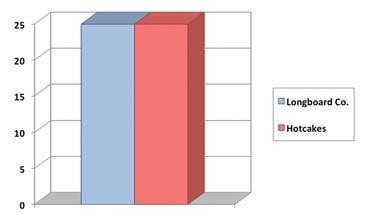
Generally at this point, margins are strong and the company structure is sound and ready to support the business.
The maturity phase is well under way. The decision point has arrived whether to settle into the core competent business or to look for ways to extend the brand reach and recoup the lost growth and its margin potential through product line extensions or new markets — all of which cost money and take resources off the core.
In the Board Room
This is the danger zone. Vital sign denial moments take over and rationale justifications help to deflect from the obvious. The very fundamentals that built the business are discarded and the scramble begins. This is the very moment you lose credibility with your team, internally and externally.
Egos, emotion and personal financial gain have to take a back seat to the primary objective of holding equity levels and stabilizing the business. Actions taken contrary only lead to an environment of square peg-round hole hypocrisy that everyone sees.
An honest evaluation of the cycle and the company’s position within can lead to a downsizing and scaling that better fits the realties for a long-term healthy market share. The first loss is always the best loss, and taking the pill early will pay dividends as others scramble to pick up quick revenue.
DECLINE PHASE
Grab your toboggan! It’s a very slippery slope with various degrees. If you don’t know what cycle you are yet, you will now. Depending on how you have navigated to this point, you are either on a GT Snow Racer with steering and brakes or you are strapped to a pair of Super Slider Snow Skates with no control at all, arms flailing!
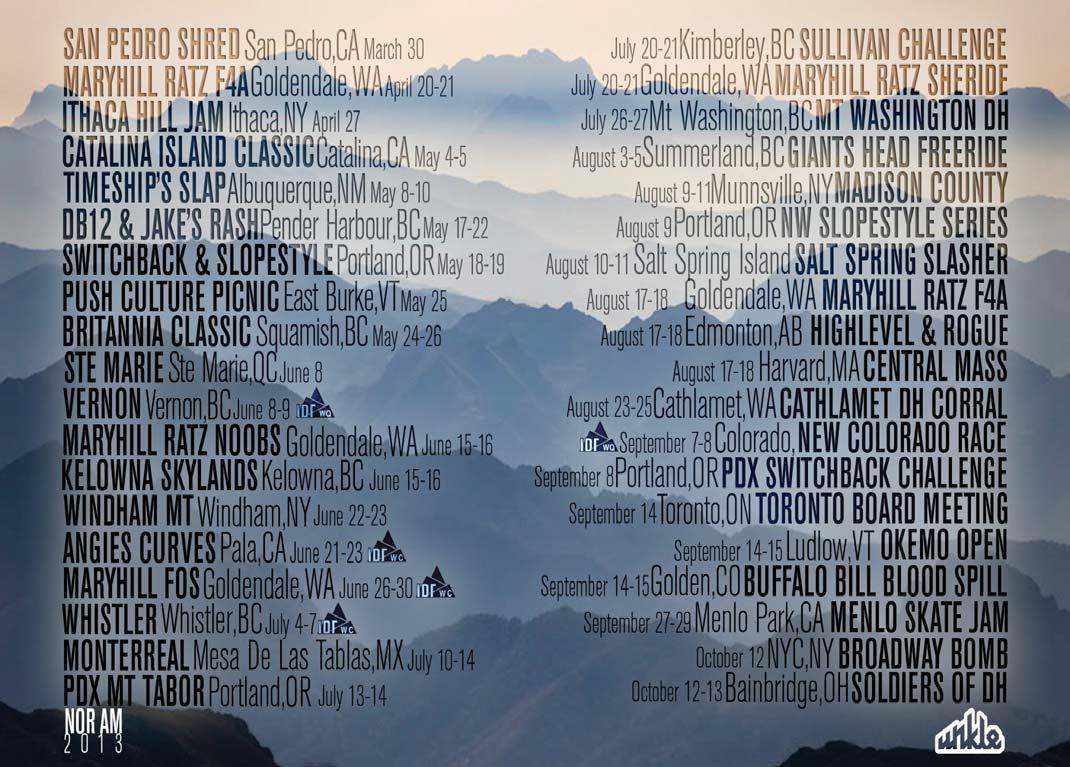
THE SYRUP
Hotcakes have always been the measure. How have they done it? You never hear them referenced as a measure of negativity. Hotcakes have never tried to be anything they are not. They sometimes lose the No. 1 spot for a bit but get it right back when it’s their turn again. There is no greater statement than to say your product sells like hotcakes.
How cool would it be to tell your kids you once outsold hotcakes and are still in business, ready to do it again? Pass the syrup! AXS
SPRING 2013| AXS LONGBOARD RETAILER 13
THE ISPO EXPERIENCE Munich 2013
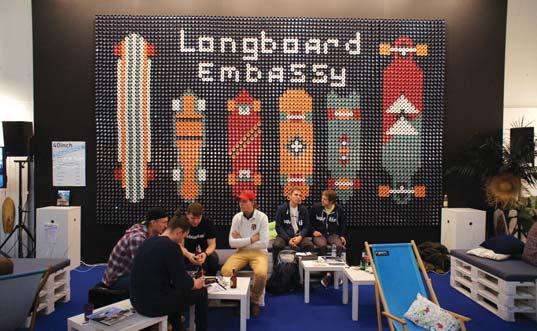

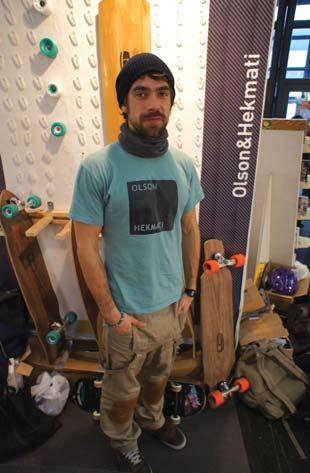

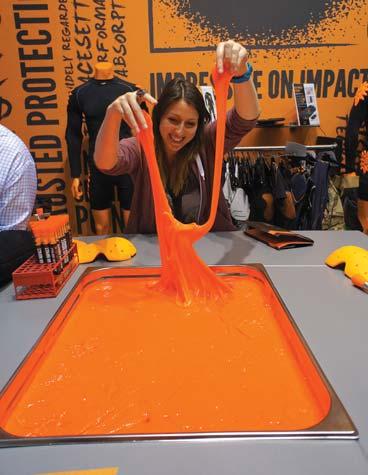

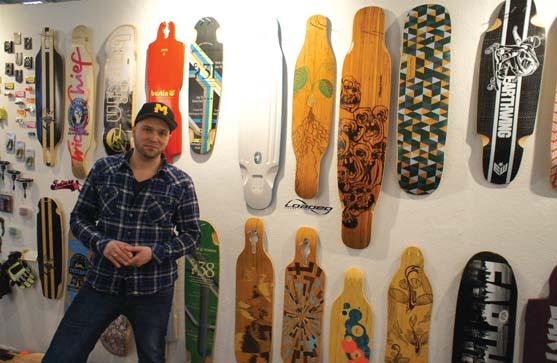


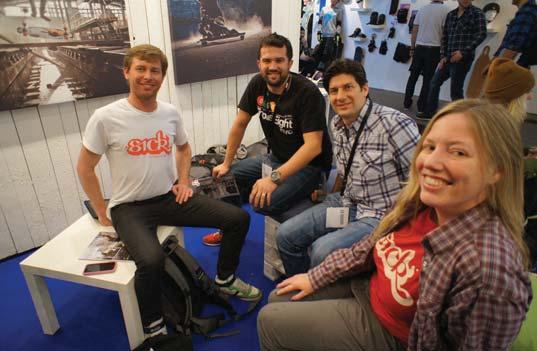
We wanted to give you just a small taste of the ISPO tradeshow in Munich, Germany. To say this show is massive is a colossal understatement. Imagine 14 Surf Expos or Agendas all in one! It is hours upon hours of walking, discovering every conceivable type of sporting goods. The action sports pavilion attracted an enormous amount of people. Concrete Wave worked in conjunction with 40inch Longboard Magazin to produce the Longboard Embassy. More than 60 brands were gathered in their own special area. Everyone agreed it was a great experience, and well worth the money and time. Munich is a very easy city to navigate. Europe is not exactly cheap, but if you can get creative with accommodations and food, it is manageable. We plan on being there next year. If you’re a longboard brand, you should definitely think about coming! AXS

AXS LONGBOARD RETAILER | SPRING 2013 14 TRADE SHOW
By Michael Brooke
A HUGE amount of thanks to the hard-working folks of 40inch Longboard Magazin, who spent a massive amount of time setting up the Embassy.
Louise Wilson, communications manager of D3O, has fun with a vat of D3O goo.
Oliver Dehmel, co-founder of one of Germany’s most beloved longboard companies: Olson & Hekmati.
From left to right: Martijn Schrama of Sickboards (Netherlands) with Justin and Bobby Oppenheim of Triple Eight and Lisa de Borst from Sickboards.
This display used 5,000 wheels (thanks, Shiner Distribution) and took 18 hours to install. Who knows how long it took to dismantle. Another feat of German engineering!
Alex Lenz of 40inch.
Stefan Gerkens of MDCN Distribution.

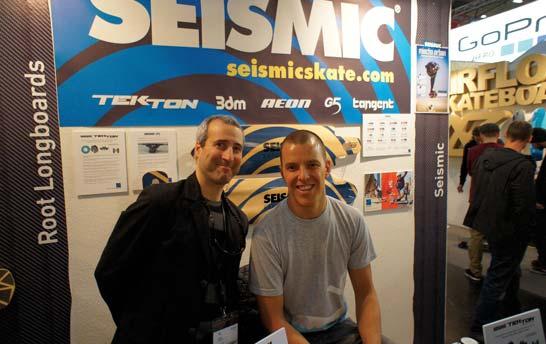
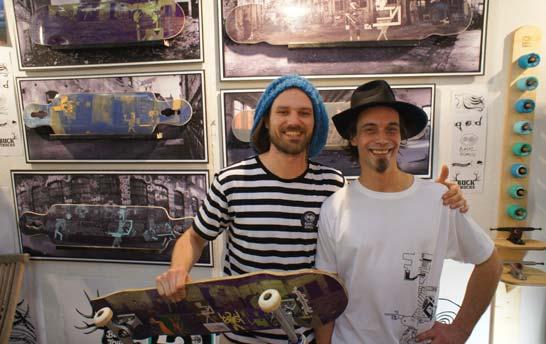
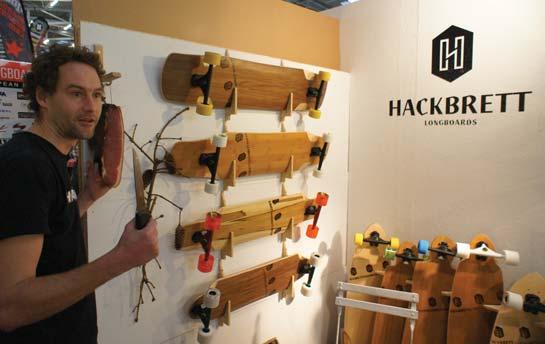



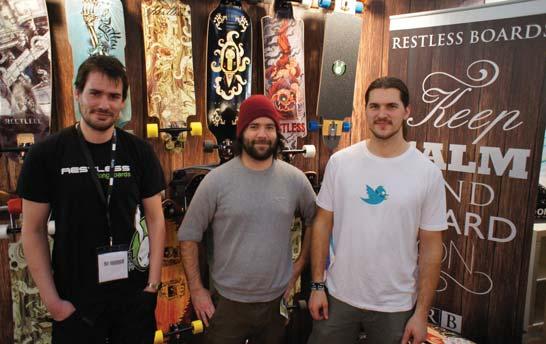
SPRING 2013| AXS LONGBOARD RETAILER 15
Lots of new brands! This is the team from Carbon Skateboards, based in Cornwall, United Kingdom: Patrick Tschorsch, Mawgan Searle and Mirko Oleschkowitz.
A number of North Americans ventured across the Atlantic to brave the time zone crunch! Graham Buksa of Rayne with Paul Kuyt of Rey Trucks.
Dan Gesmer of Seismic (left) has been coming to ISPO for years. Mischo Erban (the world’s fastest longboarder) promoted his Ronin Trucks.
Alex Luxat, the man behind wefunk.
One of the most impressive brands from Germany was Bastl. Here founder Sebastian Mühlbauer stands with carpenter/party animal Daniel Braun. This man is dangerous!
Brad and Tracey Miller of RipTide Bushings.
Hacki Hackenstein of Hackbrett Longboards. Your eyes are not deceiving you; they actually had a rack of cured meat at their booth. Welcome to ISPO!
Restless team rider Flavien Vidal with founders Alaric LeBlanc and Chris Chenard-Lemire. Based in Montreal, Quebec, Restless is expanding quickly.
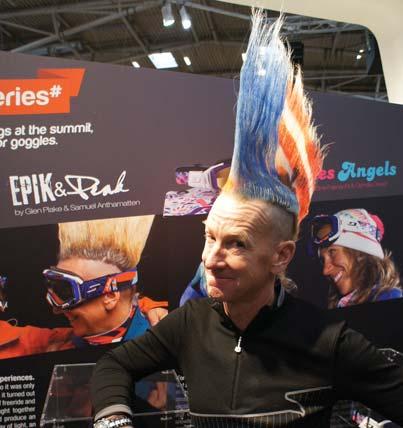

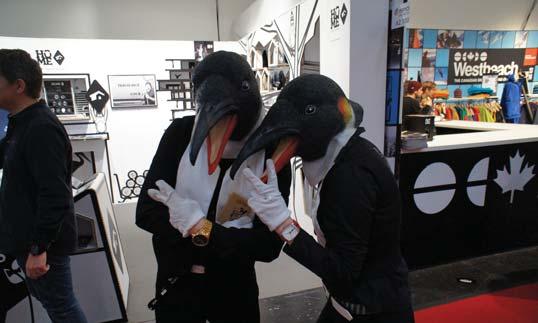
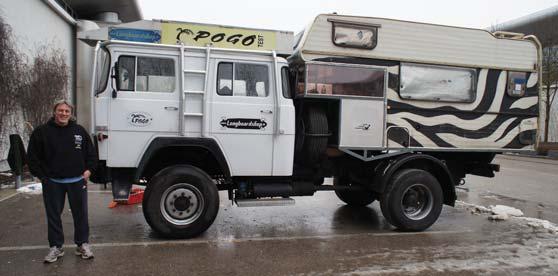
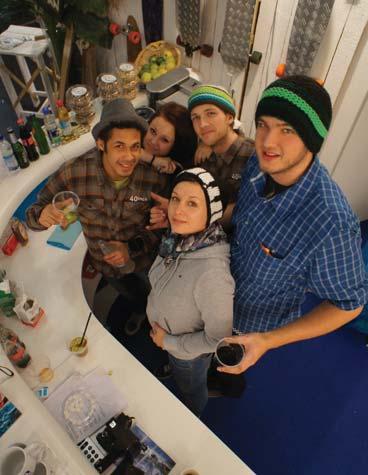







AXS LONGBOARD RETAILER | SPRING 2013 16 TRADE SHOW
By Michael Brooke
Martin Siegrist and Airflow Skateboards founder Chris Hart.
Ryan Theobald and Blake Startup of Landyachtz. It’s almost a 13-hour journey from Vancouver to Munich.
Don Tashman (left) of Loaded with Andi Gniadek of Boneless Skateshop and Pablo Castro, also of Loaded.
This is what happens when you combine a camper, truck and steroids: You get the Pogomobile. Proud owner Jogi März.
The hard-working folks of 40inch Longboard Magazin who served up refreshments at the Embassy Bar. We didn’t catch this guy’s name, but his craftsmanship caught our eye.
Extreme skiing legend Glen Plake was promoting his new line of goggles.
Penguins. As we said before, “Welcome to Europe … it’s different here.”
The Lush Crew had a very busy time. Here’s Adam Hill, Darren Rathbone, Mark Penman and Richard Auden.
One of the most memorable experiences during our stay in Munich was a huge dinner hosted by Richie Löffler of



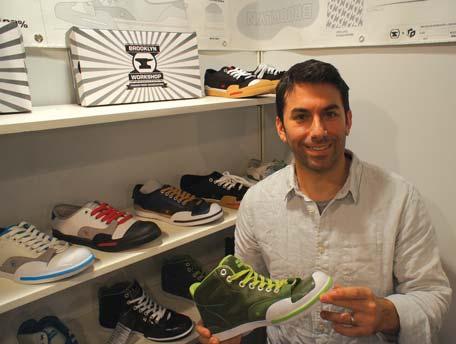
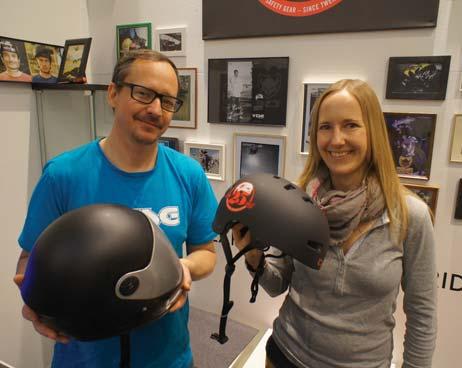
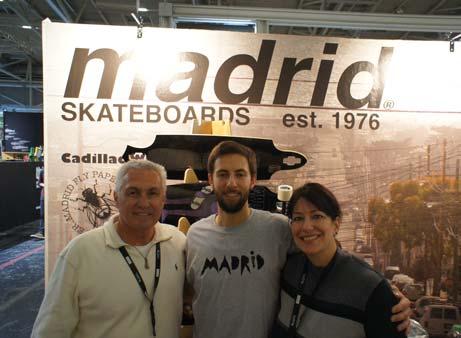

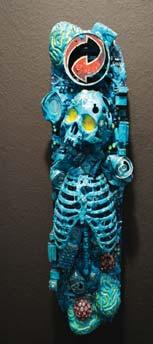



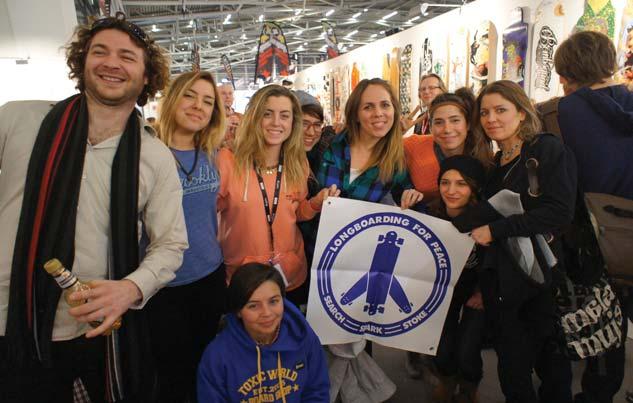
Distribution. It took a while to navigate the subway, but the party of 40-plus eventually made it to our destination — the enormous Augustiner Restaurant. Everyone enjoyed the German Soul Food (aka meat, potatoes and beer!) and many friendships were solidified.


SPRING 2013| AXS LONGBOARD RETAILER 17
The Longboard Girls Crew made a huge impression at the show. They are a great bunch of folks and have an incredible amount of energy. That’s Alex Ulrich of DTC Wheels on the far left.
We made some new friends over at Swiss-based 7Sky Magazine. Their publication is truly inspirational.
MDCN
There was a fairly large art display at ISPO with some stunning pieces. Here’s just a taste.
Free tattoos … only at ISPO!
Alon Karpman of Brooklyn Workshop proudly shows off his latest creation.
Jerry Madrid (left) and Angela Madrid (right) with their German representative, Tim Wolf.
Rudi and Nadja Herger of TSG. Believe it or not, 2013 marks the 25th anniversary of this iconic brand.


DEALER ROUNDTABLE
Q:What are one or two of your biggest concerns for this 2013 season? Be specific.
Jason Clack — Motion Boardshop, Seattle, Washington: We don’t have many concerns for the 2013 season. We have been in the industry for some time now, and each year seems to be better than the last. If we had to pick one concern it would be expanding our community of customers and keeping that community enthusiastic through various incentives and promotions. We try to work with our customers as much as possible, whether that means giving them an honest opinion about a product, asking them what types of products they want in stock or offering promotions and contests. Our customers have truly helped to cement us into this industry, and without them we would not be where we are today.
Brad Rush — Longboard Skater, Myrtle Beach, South Carolina: Well, I think like anybody, the economy! In 2012 things seemed to slow down a bit, at least in regard to the higher-priced items. Consumers weren’t nearly as willing to purchase the higher-priced decks and completes. The biggest question our customers asked was, “What completes do you have for under $200?” Hopefully in 2013 things will pick up again. If not, I feel bad for the manufacturers that aren’t willing to put out more affordable decks to the consumer. There are so many great brands doing very well that are price-competitive, while some are just sticking to their high-priced guns. I mean, besides one particular brand, those that kept their high prices, shops didn’t buy nearly as much as they used to from them. I guess the one thing they have going is more and more shops are popping up.
John Jenkins — Boards on Nord, Chico, California: Our two biggest concerns for the 2013 season are issues with manufacturers/distributors. They have issues with keeping up with the demand of the market and managing their inventories; if they don’t have it in stock, we can’t sell it. Second, some of these companies are setting new, unprecedented demands for their online retailers.
Jeff Gaites — Uncle Funkys, New York City: As a retailer, our biggest concern is the expansion of shops and longboard availability in our city that outpaces the growth of the marketplace. We’re still a mom-n-pop shop trying to compete with several large corporations that sell longboards in the city, and these companies also have advertising budgets that we’ll never be able to compete with. On top of that, longboarding is now officially on the “make-some-money-radar,” so more start-up shops are jumping into the mix, looking to get a piece of the pie. Ultimately we’d like to see longboarding follow the path of bicycles, with enough demand to warrant a shop in every neighborhood, but we’ve got to stay in the mix long enough to see the market reach that level.
Mischa Farivar — Flatspot Longboards, Vancouver, British Columbia: I am concerned about how the longboard industry affects the longboard community and how the two are becoming further demarcated. It is shifting away from being a dialogue and into being a one-way relationship. What made this subculture so potent and resilient was a very close relationship between the industry and the riders, with equal contribution from both parties. In fact, there was hardly even a distinction between industry and riders. The people ripping were also the people designing and manufacturing.
I’m also concerned about the growing number of longboard companies, and that the increase is steeper than the increase of the consumer base. As a result the available demographic shrinks considerably, leaving those who initially grew the community exactly where they started, which is eating ramen and sleeping on air mattresses en masse in tiny apartments. This is immediately volatile for everyone in the industry, except for distributors. But ultimately oversaturation is the worst lurking fate (for) us all. In my humble opinion, it has the potential to drop the bottom out of longboarding just as it fell out of skateboarding.
Q:Are these concerns something you can control? If so, what are you doing to help the situation? If you can’t control these concerns, are the powers that be aware of your concerns? Are they doing anything to fix, address or eliminate them?
Motion: We obviously can’t control our customers, but we can control many aspects of our customer relations through enhancing their experience. We expand our clientele and community by creating longer-lasting relations with our customers, and we keep customers active by including them within our community and offering incentives for participation. In other words, we want our customers to think of us as a friend who’s always there to help. We want them to join our community and be an integral part of our progression.
Longboard Skater: As far as the economy, going by past history things eventually turn around. It can be a tough ride, though. In regard to auction and discount sites, well, the manufacturers can help. Some are getting much better about upholding the law, so to speak: Respect their MSRP or you no longer can buy from them! More and more manufacturers are also having shops sign agreements stating they won’t sell [that company’s] products on certain sites, only [the shop’s] own. Several are getting better about discussing things with the distributor(s) they use, too, getting them to stop selling to the person/company if they don’t respect MSRP as well. The next step, then, is it really should be up to the manufacturer or distributor to start keeping a better eye on the auction and discount sites; they should send them an email with a list of their products stating it’s against policy for them to be sold on nonapproved websites [and asking to] please remove the products and auction listings. Artists do it all the time with people using their music without permission on sites like YouTube; they ask and YouTube removes the video. Same should be had in the skate industry. Manufacturers/distributors and shops should support each other — it’s a win-win!
By AXS Staff
AXS LONGBOARD RETAILER | SPRING 2013 20 SHOP TALK
Boards on Nord: We have no control over these issues stated above because the issues are on the distributors’ side of things. We are upfront and honest about our thoughts to our distributors. We just hope they can improve over time.
Uncle Funkys: Competition is part of life and not within our control, so we stay focused on our customers and providing the highest level of service we know how. And we hope that our service distinguishes us in the marketplace well enough to ensure a longstanding relationship with our customers.
Flatspot: All right, so here is an example that might shed some light on my concerns and what is “doable” about it. I get regular emails from someone in China, written in exceedingly polite Engrish with horrendously awkward sentence structure. It always comes with a small product sheet with a massive list of perfect knockoff products for half to a third of my cost as a Canadian retailer. This is a result of companies getting their products made in China. What this means is that it is quite possible these products are not even knockoffs and come right out of the same factory. The industry is selling off its ability to control its gear, control that is only maintained by manu-
facturing locally. So what do we do to make a difference? Buy primarily what is made in North America. Support retailers and distributors that practice responsible use of their purchasing power, and focus on companies that build locally. At Flatspot we take this very seriously, and we have a lineup that reflects our values.
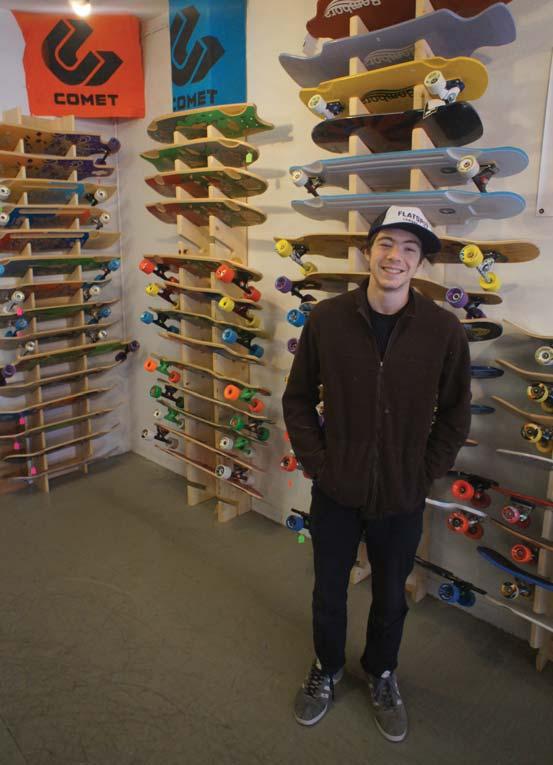
Manufacturing locally is also potentially a two-in-one solution. If the company is manufacturing locally, they are also more likely to have a higher degree of integration with the local community. It is not a guarantee that the company will be genuine, and it does not immediately warrant the stamp of local approval. But if there is a geographic separation, it is difficult to build social capital, period.
Part of the solution is also left in the hands of the distributors. Distributors’ position makes their influence crucial, and so distributors must be wary of protecting against product dumping, inhibiting saturation of encroaching accounts (build it slow, don’t boom and bust) and keeping pricing and product availability between Canada and the U.S. consistent and fair. In return, shops are responsible for contributing to the local community through essentially being the ambassadors to the public, which includes supporting events, local sponsorship, safety promotion, product educa-
tion, etc., and essentially perpetuating and spreading the sport on the ground.
But at the end of the day, when everything is said and done, we can only live and work by example and hope not too many twats bait out spots or make crappy longboards. We are doing our best to support companies that are clearly benefiting their respective communities, and do our best to leverage what purchasing power we have to lead distributors in the right direction.
Q:What are some of the things you are seeing when it comes to changes within the longboard demographic?
Motion: The age range of longboarders has been expanding in both directions. Younger and younger kids start longboarding every day, and at the same time the older crowd is also seeing more of an appeal. The young kids can’t wait to get out there and get gnarly. Generally they look for decks that are designed for speed, sliding and maneuverability; they are all about new shapes, shorter wheelbases and more control. The older riders seem to love the confidence and stability added from a really low-riding deck. They are looking for something safe and

SPRING 2013| AXS LONGBOARD RETAILER 21
Mischa Farivar of Vancouver's Flatspot Longboards.
Photo: Michael Brooke
Jeff Gaites and Kristen Howard of Uncle Funkys Board Shop, NYC.
stable because, let’s face it, concrete can be an unforgiving surface.
Longboard Skater: I think one of the coolest things is we’re seeing more and more female riders getting into the sport. Having two daughters myself that ride, that’s a cool thing to see.
Boards on Nord: The changes we’ve seen in the longboarding demographic are a lot of older people getting into the sport, as well as kids picking up longboarding at a younger age. Longboarding is addictive and gets people outdoors; we feel more and more people will get into the sport because of all the positive things it has to offer.
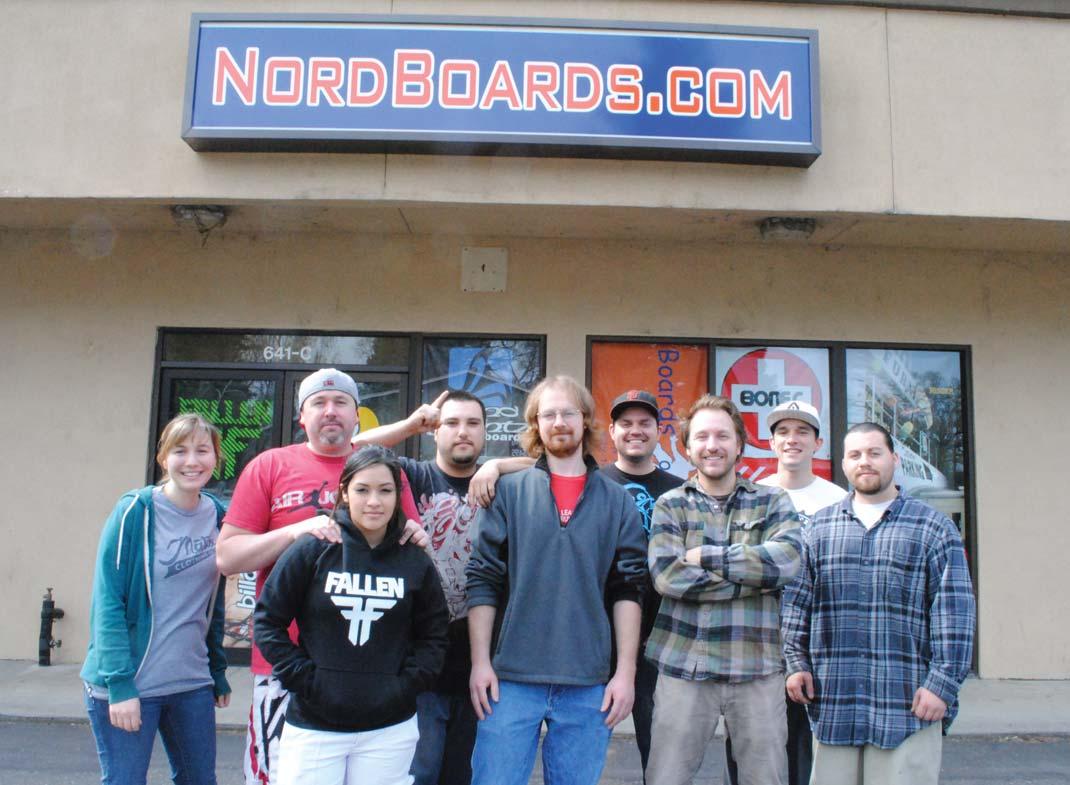
Uncle Funkys: In 2011 we saw a large influx of female riders of all ages. In 2012 we saw big growth in teenagers. If I had to guess, I think that longboarding is evolving away from the social stigma portrayed by the street skate community. Further, I feel like there’s a “skateboard renaissance” going on where more and more people are getting back into the skate styles of the ’70s and ’80 s. All [are] good and important developments for a growing industry.
Flatspot: This first point is obvious: It’s gotten progressively younger. It seems to have slowly skipped down a generation by traveling via influence of older siblings or something. The initial round of older skaters made an impression on a bunch of young kids, and those kids are the absolutely massive pool of groms that exists today. YouTube and public schools probably helped spread the phenomenon amongst the 12-15 crowd, but my suspicion is that it’s older siblings.
Since it’s gotten bigger in general, it’s large enough to sustain its own mini-subcultures, like the pure DH riders who strictly bomb or the flatland freestyle movement with ball-destroying and insanely complex manual shuv-it no-comply G-turn things. There are the drop-deck enthusiasts and the topmount fanatics. Which brings me to the impossibly stupid argument regarding the use of the terms “longboarding” and “skateboarding” and how they are distinct. This just indicates to me that there might be a little identity crisis going on, and it’s manifesting in some colossal derp of interpretation and semantics that leaves us all looking like a bunch of twats on wrongboards.
Q:Do you feel that 2013 will be a positive year for your shop? Why or why not?

Motion: We are very optimistic for 2013! Every year longboarding progresses a little further, and we are right there to help push it along. Longboarding is an ever-expanding sport with many disciplines, and each year brings new companies, new trends and more variety/choices between products.
Longboard Skater: We really do, especially for our walk-in store. We’ve been online for about six years, and at the end of August 2012 we opened our walk-in store, and being located in a huge tourist town, we just caught the end of the season; it was a total tease for what’s to come. Really looking forward to the 2013 season. People come to Myrtle Beach from all over. When they walk in the door, the look on their face when they see so many decks, completes, parts and accessories ... they freak. Besides us, there’s only a couple of the big chain stores in town, and the people that run the skate dept. for them come buy from us, too. It’s pretty cool. Honestly, though, we’re two totally different types of shops. We focus on the gear and
AXS LONGBOARD RETAILER | SPRING 2013 22 By AXS Staff SHOP TALK
The Nord Boards crew outside their shop in Chico, California.
they focus on shoes, shorts, bikinis, etc. I guess that’s why they make millions and have numerous locations and we live on macaroni and cheese — ha ha. We love what we do, though, so as long as the customer support keeps coming, we’ll keep the doors open and stoke riders out! Speaking of riders, we’ve always helped sponsor different skate events since day one, and in 2013 we put a rider team back together [including] several local and out-of-state riders. They’ll compete at events, hand out stickers and film for YouTube, so that’s something we’re excited about for 2013 as well.
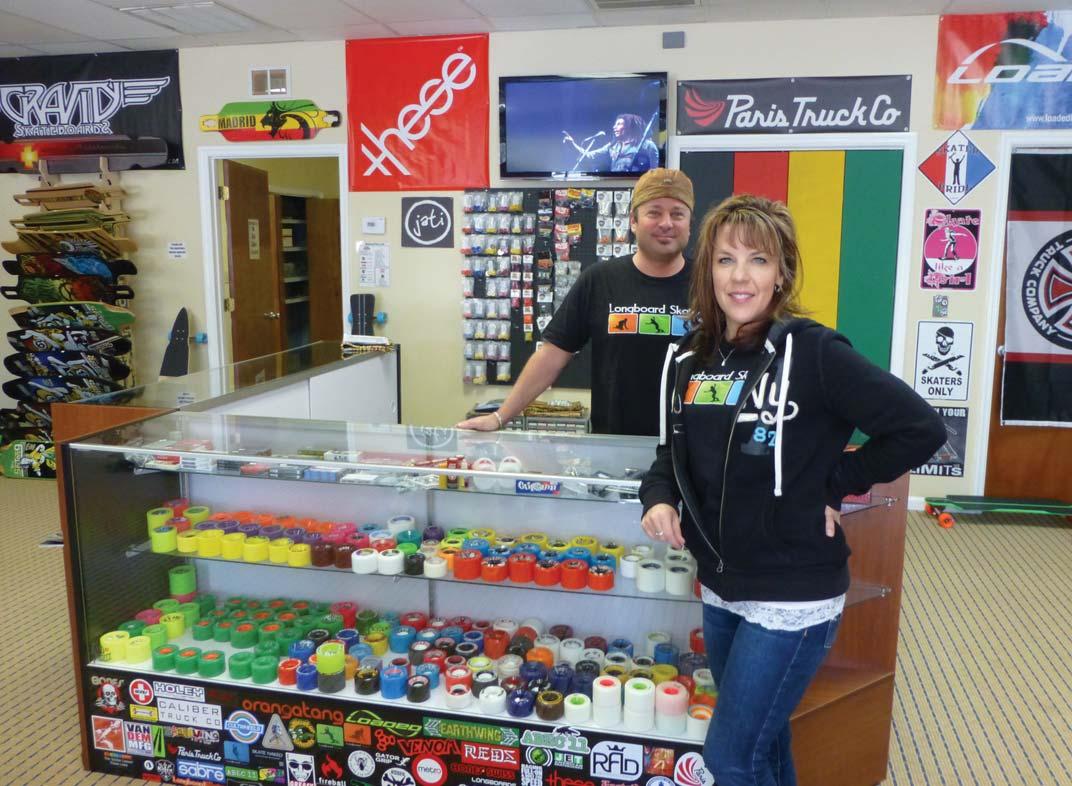
Boards on Nord: We feel that 2013 will be a hard year; we feel that way about each year. You can’t predict the future, and we need to be on our toes at all times and give it everything we’ve got. We can’t be complacent with our position in the industry.
Uncle Funkys: Yes, we are very positive and optimistic about 2013. At the same time, we are watching our sales very closely as compared to 2011-2012 to get a better sense about projected growth over the next 2-3 years.
Flatspot: Yes and no: Yes because Vancouver has
a wonderful and vibrant scene that I am stoked to be a part of, because the Flatspot Team is killer, and because we work with a bunch of wonderful and local (B.C. and North America in general) companies that make running a skate shop a pleasure; [and] no because Vancouver is also experiencing its own degree of “me too” (elaborated in the question below), and it’s not necessarily taking the community in a good direction.
Q:Do you believe there is too much “me too” product in the longboard marketplace?

Motion: No, the “me too” products are necessary for the progression of the industry; an industry without “me too” products is a dying industry. Competition between companies is one of the largest factors in the progression and innovation of products. Competition may not be the best thing for an individual longboard company, but it is perfect for the customer and the future of the sport. There are many companies trying to become the next big thing, but really it’s up to the customers to decide which companies will make it and which will be pushed aside. It usually comes
down to marketing with the “me too” products. Customers don’t just want a set of 70mm wheels; they want the set of 70mm wheels with all of the hype behind it.
Longboard Skater: Yes and no. All the longboard deck brands do seem to have their own bearings and wheels these days. But No to those that are actually putting out a great product, and Yes to those who aren’t putting out such a great product; they just want to say they have their own wheels and bearings too. You shouldn’t just stick your name on “anything”; test the product over and over and over until finally you say, “This kicks ass” and you’re proud to put your name on it.
Boards on Nord: We absolutely believe there are too many “me too” products in the longboarding market. Over time, those brands will be weeded out.
Uncle Funkys: Unfortunately, yes, there are a lot of “me too” products out there. The upside is a lot of choices for consumers. The downside: Some consumers can get lost in the Internet research/forums and forget that it’s always been about fun — regardless of the equipment you ride.
SPRING 2013| AXS LONGBOARD RETAILER 23
Brad and Stacie Rush of Longboard Skater. The shop is based in Myrtle Beach, South Carolina.
Flatspot: I think that’s been my position since the beginning of the article. Now I just wish I had read all the questions before answering them one by one. Absolutely, and it’s often much richer and older people that represent the “me too” demographic — which makes me suspicious that the “me too” phenomenon and midlife crisis are two sides of the same coin. Get into paddle boarding or something.
Boards on Nord: We were really surprised at how well the Penny boards sold last year. We didn’t believe in those boards, and it took us a long time to bring them into our shop. That brand did amazingly well for us last year, and we’re glad we finally brought their boards into our shop.
Q:
What is the one item that has sold surprisingly well that you expected to not do anything at all?
Motion: We try not to stock products that sit around on the shelf, but it does happen. One product that has surprised us was board racks. When we first got these in stock there was little to no interest, but recently people have been more interested in the idea of putting their longboard up on the wall for display.
Longboard Skater: Hmm, well, we probably wouldn’t carry it if we expected it not to sell. I will say, though, considering how many bearings are on the market these days, when Zealous Bearings came out they just exploded. They’re killing it for sure!
Uncle Funkys: Two items have done very well, to our pleasant surprise: Plastic Penny [boards] for kids and beginners, and Carver boards to the surf community.
Flatspot: G-Form. They looked so skimpy and unprotective. Turns out they are a rad product that isn’t just blanketed in technologically complex hype, but genuine technologically complex quality.
Q:Any final comments?
Motion: Skate safe and always wear a helmet!
Longboard Skater: We’re totally stoked you put us on the front cover. Wait, when this goes to press, we are on the front cover, right? I mean I’m not going to beg, but — OK, maybe a little — c’mon, man do it! If not … may a thousand fleas infest your armpits!
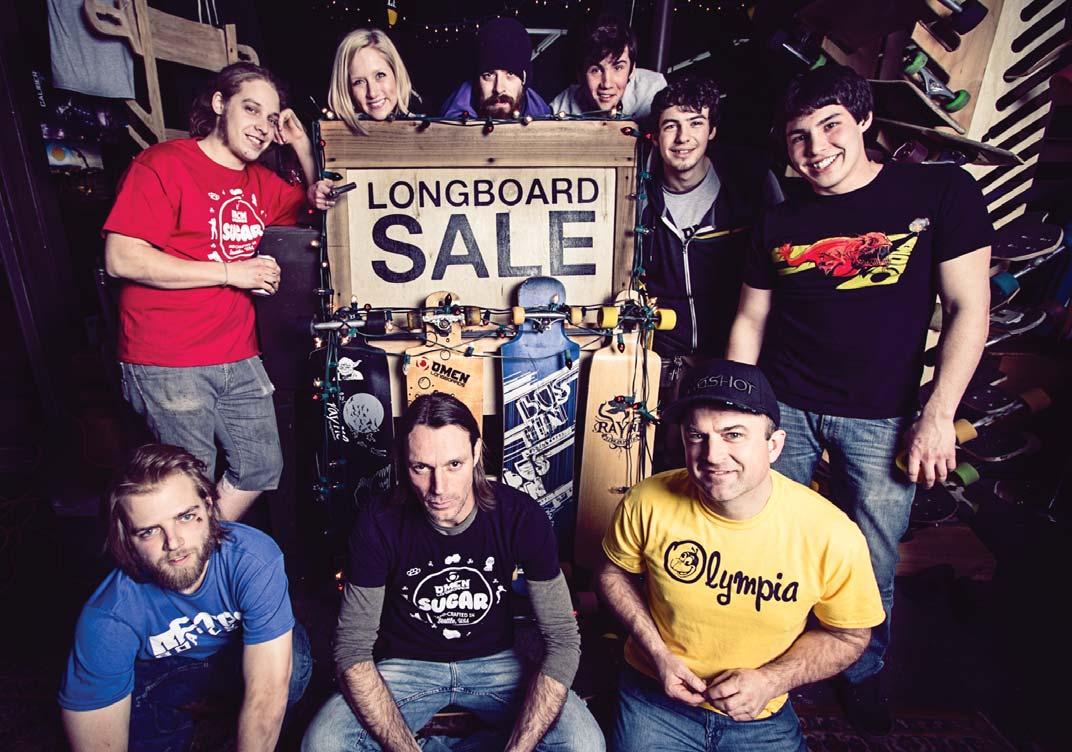
Boards on Nord: We want to thank all of our customers! Without the customers, we would not be here today. We also want to thank all the longboarders for getting the sport to where it is today! Lastly, we would like to thank the manufacturers/distributors because without their products we wouldn’t be able to get people longboards. Basically, we want to thank everybody! Keep up the good work, and remember that Boards on Nord has much love for everyone. Peace.
Uncle Funkys: Party on, Garth.
Flatspot: It would be a colossal failure of interpretation if my anti-“me too” sentiments were to be understood as being isolationist. I cannot overstate the value of inclusion, but it has gotten to the point that we need to be selective and intelligent about whom we work with, and what we consider good business practices. This is not a matter of pretentiousness. If you are familiar with the ageold debate between scientists as to what falls into the category of “science” and “pseudoscience,” it’s not hard to find parallels in our community. Longboarding has gotten to the point where limited resources are forcing the community to make a distinction between who is part of the scene and community and who is feeding off of it. AXS
AXS LONGBOARD RETAILER | SPRING 2013 24 By AXS Staff SHOP TALK
Hailing from Seattle, Washington, it's Motion Boardshop.
Photo: Tuffer
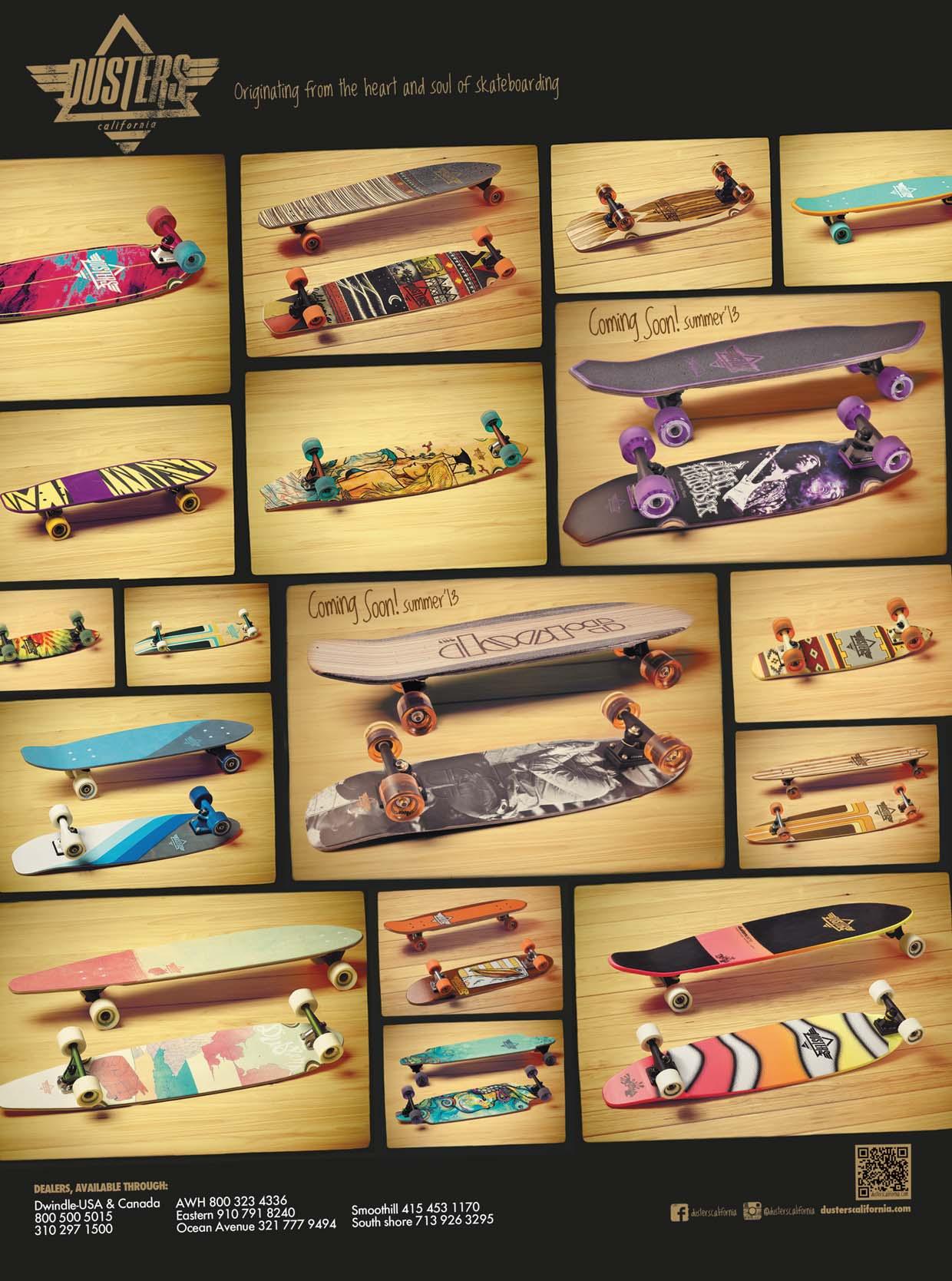 By Michael Brooke
By Michael Brooke
READERS’ CHOICE: ANALYIS, RANTS & RAVES
The AXS Gear/Concrete Wave Readers’
Choice survey yielded a tremendous amount of information. Almost 4,000 people took the time to fill out the survey, with an average time of 14-plus minutes to complete! That represents almost 40 days’ worth of time!
We produced a fully comprehensive listing of all companies in the Concrete Wave Buyer’s Guide. But here, for the purpose of space, we will address some of the key findings from the survey.
We instituted two distinct changes this year. First, we changed the actual questions to reflect what brands are actually owned by readers. Rather than focusing on the word “favorite,” we wanted to know what people actually had in their quiver. Second, we also ensured that each IP address could vote only once. In the past, some people had tried to game the system and get their favorite brands higher placement. Having one vote per IP address cut down on a lot of nonsense.
There are three key categories within longboarding: Downhill, Freeriding/Sliding and Carving/Cruising. The vast majority of customers purchase longboards for simply carving/cruising. Freeriding/sliding has definitely caught on as people blend speed with style. Much of the technology found in downhill is comparable to Formula One racing. These products eventually become mass-produced and the ideas hit the mainstream skate world. This is very much like the bike industry.
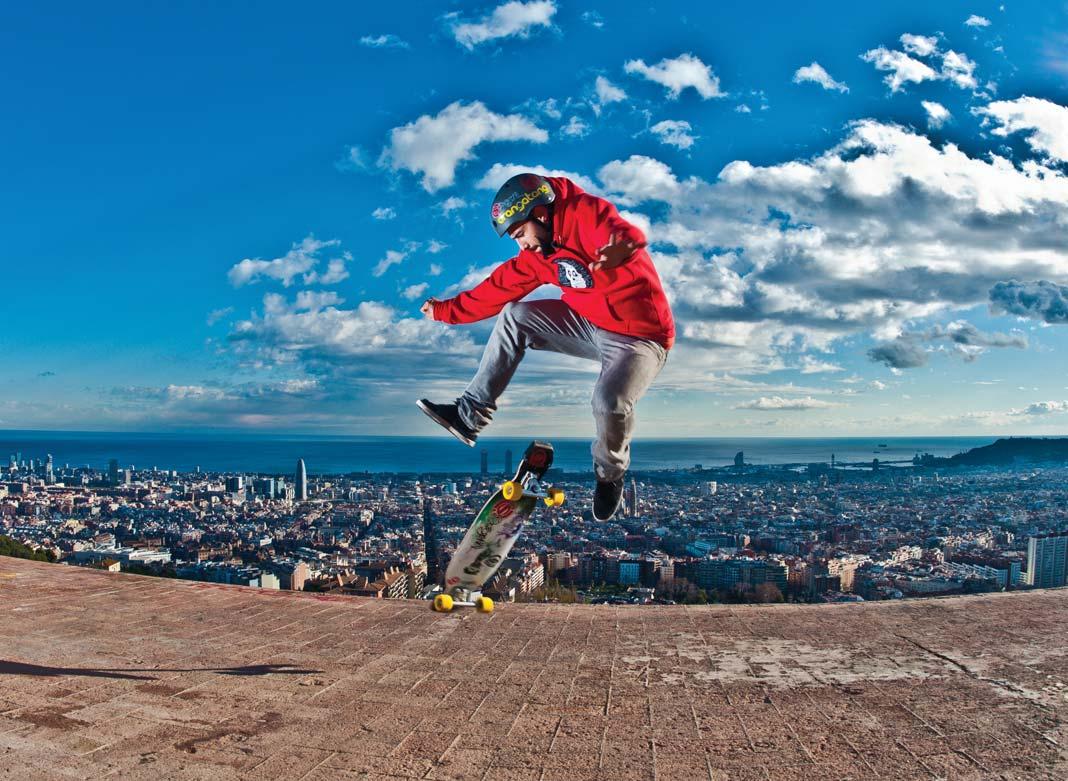
AXS LONGBOARD RETAILER | SPRING 2013 26 MARKETING INSIGHTS
Orangatang Wheels took the top spots in Freeride, Long Distance and Sliding. Rider: Aleix Gallimó.
Photo: David Botello
Sector 9 entered the marketplace in 1993. Back then, they were dismissed by the industry and laughed at by many. Twenty years later, their hard work has completely reshaped the skateboard industry and they have spawned dozens of companies. They are still the dominant market leader, selling millions of dollars’ worth of goods each year. What is significant about their first-place win in the carving/cruising category is that this is the first time they have accomplished this feat. Sector 9 tends to hit many different categories. Carving and Cruising is a big category, and Sector 9’s top spot clearly shows they are the market leader.
It’s no real surprise that Landyachtz made a complete sweep of Downhill, Freeriding and Sliding. The company has built a solid reputation for quality and innovation. They have also spent years building their distribution network. As my friend and marketing consultant Jeff Harborough would say, “They are doing so many good things correctly.” Also, from their video productions to their campus tours, Landyachtz invests heavily in communicating what their brand stands for.
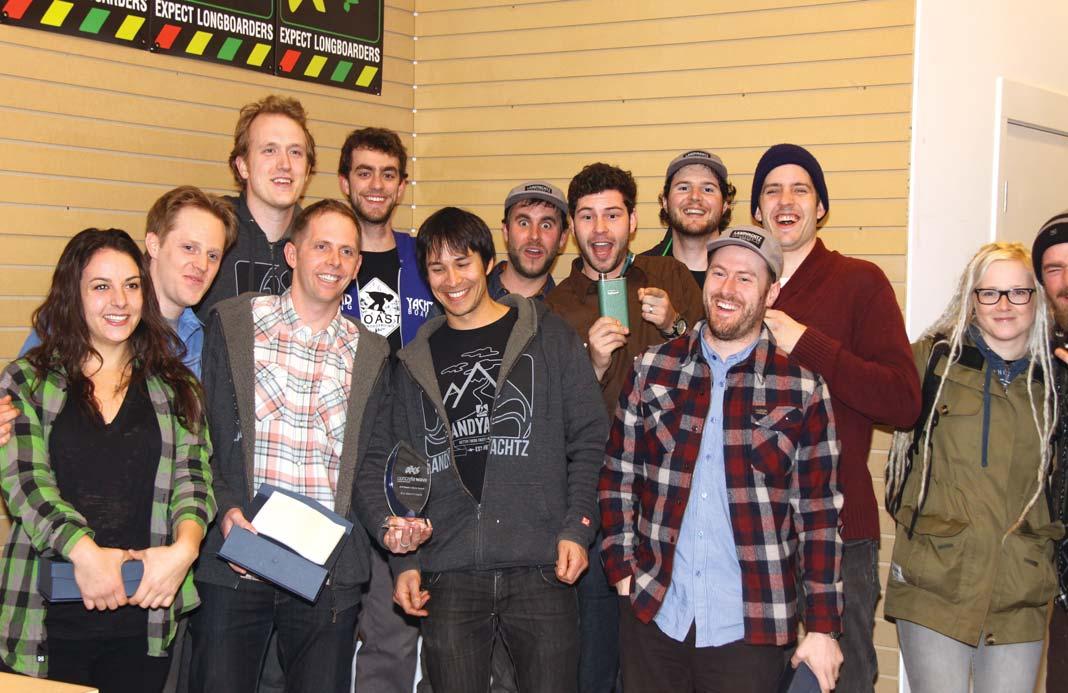
Coming right behind Landyachtz are Rayne, Loaded and Comet. Each of these companies has done an excellent job of establishing what their brand represents. This

resonates deeply with core riders, and this in turn also filters out to the mass market.
Wheel replenishment is becoming a key factor in consistently bringing customers back to shops. Wheels have become disposable as riders core them by sliding. The market is dominated by Abec 11 and Orangatang. Both have their devoted fans. However, Sector 9 and Hawgs also hold key market shares. And Skate One’s these Wheels have made an impressive leap into the longboard wheel market in less than a year. Wheels are a crucial part of longboarding. If your shop isn’t doing everything it can to ensure riders’ appetites are satisfied, you might want to start educating your staff pronto!
Paris and Randal Trucks are the preferred choice for many skaters in a number of the truck categories. In particular, Paris has done an incredible job of product development and marketing. However, Caliber and Bear have strongly positioned themselves in the Downhill category.
Perhaps the biggest surprise was in the Bushings category. Blood Orange took top place, followed by RipTide. This shows once again that nothing is static. Then again, Bones Bearings remained on top for the third consecutive year. They just dominate the category.
SPRING 2013| AXS LONGBOARD RETAILER 27
The gang from Landyachtz at the Readers' Choice Awards in Vancouver. The company picked up several awards including Downhill, Freeride and Sliding Decks, along with Most Admired Company.
Photo: Rick Tetz
Joey Pulsifer of Paris Trucks. Paris took the top spots in Carving, Freeride and Slalom.
Photo: Michael Brooke
By Michael Brooke
Triple Eight and Pro-tec are the two top brands in the helmet and safety gear category. Note that G-Form has come from pretty much an unknown to grabbing the fourth-place spot. As word spreads on this remarkable product, look for some major moves from them.
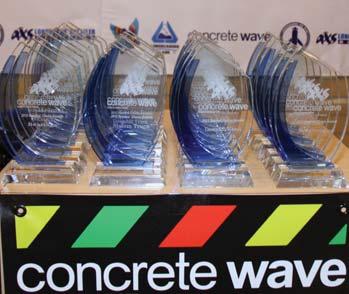

Silverfish Longboarding continues to dominate as the go-to site for longboarders. But three other sites are also prominent in providing skaters with their daily (or sometimes hourly) fix of info. SkateHouseMedia has done a wonderful job of creating a brand and not just a website.
Longboardism, which is based in Toronto, has quickly become a favorite of many because is constantly updated and is an easy read. Skate[Slate] is also a popular site with riders.
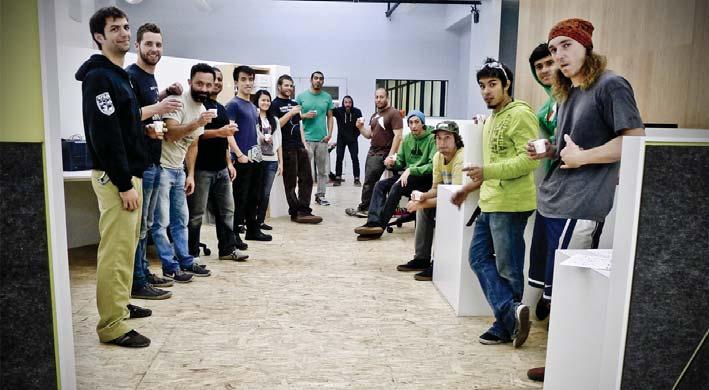
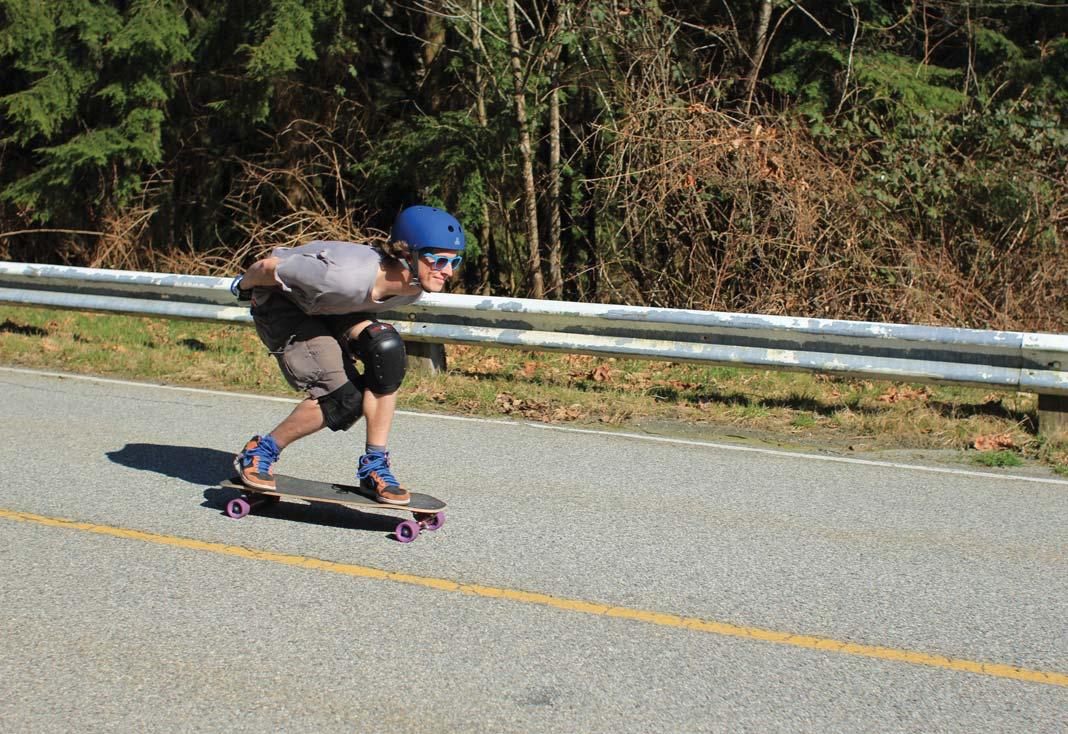
We were very interested to learn more about what people felt about the product reviews they read online. Approximately 20% of the respondents were either not particularly satisfied with online reviews or were neutral about them. Roughly 60% were somewhat or very satisfied. Almost a quarter of respondents said they were extremely satisfied with online reviews. This is significant and means that for the vast majority of people, what they read online about product translates into beliefs about that product. If they are satisfied that the reviewer is providing accurate information, this will translate into sales (assuming the review is positive). Of course, if the reviews are poor, this will most likely have a negative impact on sales.
One thing we ask respondents to do is to tell us their thoughts in their own words. We don’t publish these comments in Concrete Wave. However, we are delighted to share them with you, our loyal AXS reader. These unfiltered musings provide for some humorous and incredibly insightful moments. We’ve scoured the best of them for you here. If you’d like the entire data dump of comments, just email us.
AXS LONGBOARD RETAILER | SPRING 2013 28 MARKETING INSIGHTS
Patrick Switzer was voted Favorite Downhill Skater. He rides for Triple Eight, which took both Helmet and Safety Gear ownership categories.
Photo courtesy Triple Eight.
The Loaded gang at their new headquarters. Loaded took home trophies for Best Videos and Best Ads in CW
COMMENTS [UNFILTERED]
I would just like to make clear that although I do not compete in any form of racing or competition involving skateboarding I believe that it is one of the most enjoyable things of my life. I can just jump on my board and head down to check the surf and have sessions with mates of which throughout we draw adrenaline and stoke off each other and learn crazy new tricks. What’s not all I feel it’s important to give people an insight into all elements of skating such as downhill, freeride, transition and cruising but from what I have seen is friends who go onto racing forget about all other aspects and focus solely on downhill and ultimately leaving the sport because they naively felt there was nothing more to accomplish. Just remember Concrete Wave, it would be awesome if you keep on promoting all other aspects of longboarding as they all combined make up the longboarding evolution!
A major concern I have is that some small groups of longboarders should show more respect towards the community and authorities. There have been crackdowns in certain areas of Victoria, Australia and it is spreading further out of the city. Because as is always the case, it only take one to ruin it for the lot of us!
Pushing for less than a year now and I love long boarding. Broke my wrist going down hill but still longboarding with the cast on. Think I’ll be longboarding for the rest of my life and I like it more than driving because I don’t get stuck in traffic.
Skateboarding is awesome good for your health good for your mind meet every locals helping everyone build a better community even do our country the Philippines is very poor but were so rich in good times spending time with the crew and we are all open to all international locals to visit our country experience the stoked islands and hills shred it up
Will people even read this? I think this whole “underground scene” being associated with “downhill skateboarding” thing is lame. I’m using quotes because I hate saying those things, but I think it’s apt. Skating is skating, some skating is lame to some people.
It is going where street skating went in the 90s, too much emphasis on tricks, sponsorship and fame. It’s gonna crash big time. Only to return to an averagely popular activity, where it belongs.
The future is bright. It’s great to have a sport where young and old can compete and play together and where everyone looks out for each other.
There should be more intentional acknowledgement/acceptance of scooter riders. My son one of the biggest scooter riders in the world, and he is breaking barriers in his sport like we did in the 70’s. We can coexist.
I feel that longboarding needs to be recognized as a green, healthy form of transportation. Recently I was notified that skateboarding/ longboarding was banned within the Central Business District of Victoria. It’s the same old story a few bad apples have set the precedent for bylaws that prohibit longboarding. Due to the climate, proximity and topography of Greater Victoria, it is an ideal environment for longboarding.
As a longboarder and climber, I have seen the most success come from treating locals and authorities with respect. Be proactive, start relationships and communication before spots get blown out. Teach safety, and instill it into our culture. Pride, crappy attitudes, and stupidity ruin it for others and ourselves... just sayin. Do what you love, love others while you do it.

I like to freeride and go hard all day. The fuzz respects me and I always skate safe. I’m not quite a pro, but I’m definitely not a grom. So send me free swag. Thanks in advance.
I really want to see the sport progress into becoming a more professional sport (like bmx etc.) In the future, I would like professional riders to be able to make a full career out of the sport and be supported fully by their sponsors. In doing this, I do not want to see the sport loose sight of its origin or roots.
If you’ve ever stepped on a longboard the feeling is unexplainable. In the Past 4 years I’ve watched longboarding expand from city to city and now country to country. The Broadway Bomb in NYC went from 150 skaters the first year to over 2000 in its 4th year. Longboarding will forever hold a place in my heart. It’s an escape from reality that anyone can call his or her own and is respected as a sport all in itself. Skateboarding and Longboarding differentiate in many aspects but they’re beginning to become one in the same. Hopefully one day skaters and longboarders won’t be seen as a nuisance or rebellious kids but rather innovators of an extreme and exhilarating sport. Thanks for reading the rant and spreading the stoke. Stay classy :)
Longboard gear is taking leaps forward year after year, and the riders themselves keep driving up the steezometer. We got Mischo going at speeds they could have never imagined fifty years ago. Then we got guys like Kyle Martin and Liam Morgan who blur the line between regular and goofy, and many more riders who we’ll all look back on as legends.
The future is just looking like a huge pile of stoke. It’s a real treat to think we are all here at the birth of something positive that will stay with humanity forever. I wish I could see what it would be like even just a hundred years from now.
I hope this sport continues to grow and carries the image of respect, community, and charity in the events and the way skaters carry themselves. I hope it remains as inclusive as it has been and I hope it continues to push for local shops and brands.
SPRING 2013 | AXS LONGBOARD RETAILER 29
We had numerous countries participate in the survey. This is Marcelo Costa from Brazil. Photo: Sergio Yuppie
By Michael Brooke
Skating is my life, all I want to do 24/7, however the harsh Canadian winters hinder the amount of time I can skate throughout the year. Snowboarding is also a passion, but even when I’m preoccupied with the slopes, skating still somehow creeps into my thoughts. I love how skating, especially longboarding, has been progressing over the year. When I stepped on my first board when I was 10years old, I’ve never been able to stop. It’s not a hobbie or a simple past time, it’s my life. I skate to release stress, to think over thoughts, to be happy, to hangout with friends, bond with people and express myself. I was the first person in my town to get a longboard, and I tried to make the scene grow. It’s hard, especially when there’s such a division between Street skating and Downhill/freeride skating. I’ve taken a lot of harsh, rude, and sometimes hurtful insults about longboarding, but I stay strong and push myself. It makes me stronger. Since I first attempted growing a longboarding community in my town, the first year I had a group of maybe 5 or 6 friends, now a have a club of about 100 and growing. It’s wonderful to watch and I can’t wait to take it further.
My hope is that longboarding continues to grow in strength and numbers. I am 42 and I love the sport and feel it can be enjoyed by all ages and gender. My son and I love to spend the weekend longboarding. I also have a Metroboard motorized longboard and I love to just cruise up and down the hills on my lazy days. I cannot wait for the boosted boards release to add to my motorized board collection!! I love the new innovations in the boards with concave, gas peddles, and flex grades!!!
So many girls skating now, never a bad thing to see a beautiful girl on a beautiful board doing beautiful dancing!
The British scene is going from strength to strength, we just need our UK leg of the Downhill world cup back!
Hate to say it but short deck skaters are giving a lot of attitude to Longboarders in the UK, they think it’s cool not to wear a helmet and sometimes actually take the piss when they see me wearing one. They won’t be laughing with a crack in their skull!
Well, I used to do downhill/ freeride. I was way into it. I got really good, then when school started my friend got me into street skating. I really like it cause I feel like you aren’t limited to what you can do. ANYWAYS. I feel like a lot of longboarders should try out street. It isn’t great at first, but if you put a lot of effort into it, it’s probably one of the most satisfying things to progress in. LONGBOARDERS! TRY STREET!!!!!!
I think that there is a big misconception of lonboarding. People think that we are out of control, pot-smoking teenagers. This is not the case when I skate I am always on the lookout for nearby obstacles, cars, and pedestrians. I would really like to see the government to work with skaters, not against us. An outright ban helps no one.
I like Switchback more than my girlfriend.
I live in Russia, where longboarding is still new and hard to fight for against greedy distributors,
cheap goods, and ignorance. We have much to do about it, and it makes it beautiful — to do what you like and to build your own movement. So I see the future of longboarding is wonderful in Russia and so in the world too, because I know greatest people do their best making it true and soulful.
I see the future of skating being when all this different disciplines stop the hating and come together. Skaters are the new rock stars. And as such, are positioned to leverage this power in the evolution of not just skating, but mankind. I see the future of longboarding being a return to the roots of skating, where all styles are welcome.
On a more technical note, I see longboarding (specifically freeride) merging with street skating for maximum stoke. Imagine if you crossed Gonz and James Kelly. That’s what I want to see.
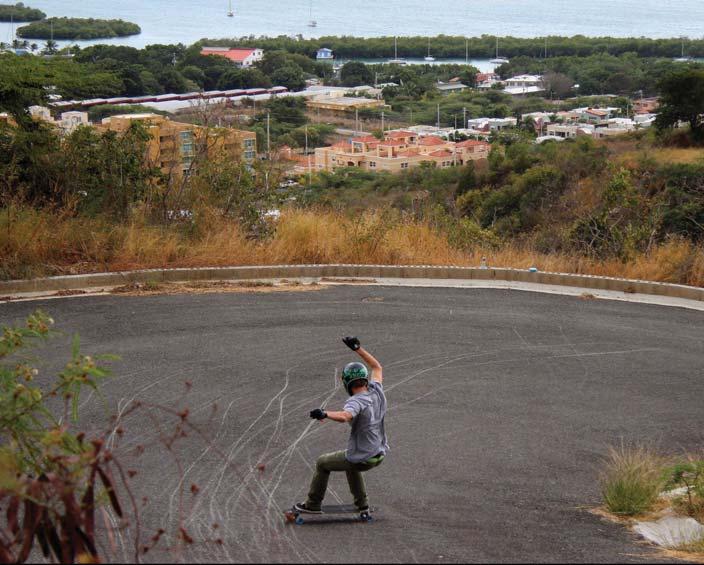
I won’t rest until Thrasher Magazine features somebody from the downhill scene on the cover. It probably should be Sergio Yuppie. Because he’s got the mad skills. They could do whole issue featuring Cliff Coleman and the new school of downhill. To me it’s a travesty that the most prominent skate mag is ignoring over half of the skate scene. So the future I see tears down these walls. ;)
Longboarding has become hugely popular in the last two years. I feel great about where it’s headed. When I started riding long I hardly saw anyone in this city, and everyone was asking me why, why is your board so long? People still stop me when they see me trying to do some more ‘traditional’ tricks, and they tell me I need a smaller board. When I went in to my local shop and asked if they had the Loaded Dancer, they had never heard of it. They only had Vanguards. I asked if I could see the Luke Nosewalker and they said I was too short to ride that board, it’s meant for a much taller rider. I did a LOLWUT and tried to explain but they wouldn’t have it. Similar situations around the scene are my only problem with longboarding. I don’t care if someone is a new rider or an old one, educate yourself. Owner of a skate shop refusing to sell new bushing to a young rider whose board is pulling left and just ‘cranking them down’ more, to his obliviousness and no avail to the kid — get educated. When people say bearings are ABEC # because that’s the number of balls in the bearing which = the speed, I ask them: what about ABEC 1? They need to get educated. Police who stop me for riding down a huge beautiful hill at 3am and telling me I can’t be ‘all over the road, back and fourth like that’. They need education.
Only comment is the lameness of the split between “longboarders” and “shortboarders”. It is all skateboarding.
AXS LONGBOARD RETAILER | SPRING 2013 30 MARKETING INSIGHTS
Abec 11 took first in the Downhill and Slalom Wheel categories. Rider: Levi Green.
Photo:Rory Russell
Longboarding needs to make haste to separate itself from the supposedly anti-authoritarianism espoused by “shortboarding” companies and participants to ensure its viability as a form of transport and keep it from becoming a simple fad. Like it or not, skateboarding is not YOUR form of social rebellion anymore. Skateboarding is OUR sport. What you do and how you express yourself while riding, or even carrying, a deck affects all who skate. If you ever wonder why that skate park didn’t open, or your favorite park closed, or like in my town where skateboarding is illegal in the street period; ask yourself if the poor public opinion is your fault, because you were only thinking of yourself. Next time you ride concrete think of me, because I’ll be thinking of you and trying to send positive energy.
What has longboarding done to my life? It got me new friends. It kept me in shape and created a world where friendship and fun is beyond the ordinary. It gave me a new life. It gave me the fun that I never experienced. It kind of spoiled me, but I learned from my mistakes. It actually matured me. It gave me the balls to go 40+ which was very crazy for me. It brought me closer to my friends. I had never spent so much time and dedication to become better or be great at it. Just love the sport. The people you meet surrounding you changes the way of your style I skating. I’ve learned so many styles of longboarding through my friends. Finally I hope many people can experience how great longboarding is. You’re not risking your life, you’re actually getting an adrenaline of greatness and the feeling if joy in our life. Longboarding is my love, I do it every afternoon and sometimes even before school in the morning, it is like my drug, I’m addicted to it. When I think about longboarding I just get so stoked and keen to get out there to my favourite hill. Although my favorite hill that I used to skate all the time has been blocked off!!! That is the only thing I didn’t like about longboard and stacking, stacking isn’t good.
I’m really looking forward to new technology that will be put into the skateboard gear. I am also looking forward to seeing what the future holds for downhill skateboarding with the newly formed IDF.

All I see are movements and events in big cities that will surely give longboarding a very good reputation, but even in the biggest of Virginia (Virginia Beach) the local law enforcement has certain hatred towards us. There’s only one spot in the entire city that has low traffic, a very steep, but short grade, and has perfect pavement. Sadly it’s right in front of the city’s biggest and more affluent school. This means 2000 kids know about this hill and
more than likely, half of them have tried to skate down it with a board bought using “daddy’s money”. These kids are all inexperienced and mostly aren’t wearing safety gear. The residents on that street have told my skate group that we aren’t allowed to skate there anymore due to kids having close encounters with cars. Now I’m telling you all of this because I want to see this changed. I don’t have a big enough audience to tell this to and it’d be extremely helpful to somehow change the police’s minds and to educate the younger kids on how to stay safe, and how not to blow such a perfect spot.
Super stoked to put on events in Anchorage, Alaska. We have such a rad community here that doesn’t get much attention because...it’s Alaska. Who says longboarding has to be a positive, inclusive community where everything is accepted? We never signed up for that.
I am at a point in my life where I have injured both knees, and have dislocated my shoulder. All do to long boarding. This makes it difficult to continue skating (and many other things), even though I love it. However, I am worried that if I keep doing it there will be no point, and I will just keep injuring myself. I read an article in this magazine a little while back about a guy who skated, wanted to be sponsored, realized it was dumb and just skated for the hell of it. Eventually he did get sponsored. It was inspiring. I am waiting for the point where I go back to just loving it. It is difficult because the majority of the community is doing the same thing; trying to be the best, trying to get ahead. Maybe it’s just the freaking winter. I’ll blame it on that for now. In short, fuck the cocky skaters, peace to the humble skaters, and what up to the skaters who love it. I hope we can all just love it.
Some skateboards are good for getting air. Some skateboards are good for going fast. Some dudes like to get air on their go-fast skateboards. There’s nothing wrong with a little wrongboarding, as long as you know what you’re doing.
Most of the freeriding we’re doing may be an extension of what Daryl Freeman was doing in 2001; but we’re going bigger and faster than he ever did. Downhill is pretty off the chain right now and there are doing some cool shit with soft wheel street skating.
What longboarding needs to do is stop worrying about names. It doesn’t matter who made the plank of wood beneath your feet, it matters what you’re doing with it. It matters where you’re going personally in this sport. It matters that you are working hard and that every time you fall you get up again. This is how this sport will gain respect. Fuck all hate among riders! Good dammit! So tired of all shit thrown at each other because of different opinions. Go skate instead! You only live one damn time so us it to have fun! And be respectful!
I absolutely love the sport. Yet, with all these new skaters (noobs and kooks) coming and blowing spots, I feel like longboarding is becoming too mainstream in a bad way these surveys could be redone a lot so that they don’t take hours to fill out and I’d actually bother answering more stuff. Typing sucks, get some options to click on and have a “add your own” if it’s not listed. C’mon guys. Every year it’s this same crappy survey to fill out I want to give feedback but this format sucks ass. That really grinds my gears.
Longboarding has brought me places and taught me things nothing else could have. It has become my life. I love every minute of it. I’m lucky to live in a town with a wonderful longboarding community. Unfortunately our local shop recently got broken into and robbed. It has really hindered our community because the leader of our longboard club is also the owner of this store. He does so much for our community and has organized countless events. He has been a key player in sparking the stoke in southwest Missouri.
SPRING 2013 | AXS LONGBOARD RETAILER 31
Rayne placed very well in the the Downhill, Freeride and Sliding categories.
Photo: Michael Brooke
By Michael Brooke
When I first was introduced to longboarding I didn’t know what to expect, and now I absolutely love it. I love what longboarding has become and I can’t wait to see what the future holds.
At 48 I’m hugely biased, but I think there is a bigger over 40 niche to be marketed to (still of course will be the minority, but lots of room for
growth over current.) Given the number of knuckleheads like me who are in denial about age, orthopedic consequences and overall dignity, there’s probably a little tapped market of guys (some women? dunno) who have the disposable income to buy a full quiver of boards at a time just to feel like they are still 20 years younger. Personally, I had to save for 5 months
to buy my first board in 1977. Now, whenever I realize that my skills are sub-par or that I’m not progressing at all, do I resolve to practice harder and skate more? Hell no — I fool myself that it’s all a matter of more and better equipment, and off to Daddies.com, Edge.com or Valley Surf & Skate I go.
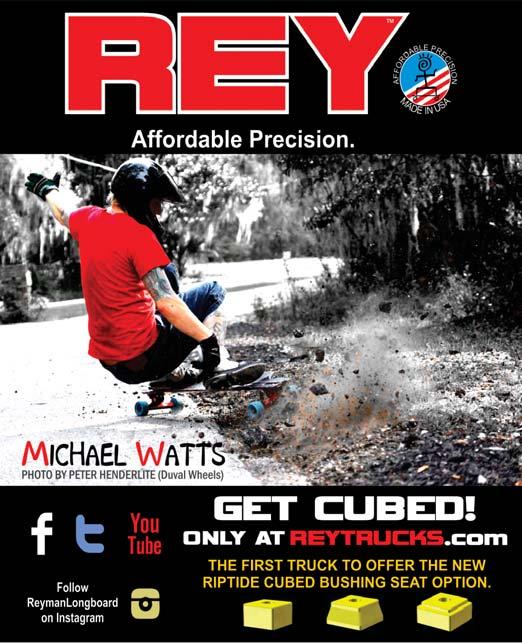
I just started boarding this year and it is a great relief of stress and mode of transportation for me! I plan to continue boarding until it is not possible for me anymore!
I would be lost without skateboarding. Gives me a sense of direction in life. Gotta walk up the hill in order to enjoy the sweet goodness of surfing downhill. Keeps me sane and focused in the strangest life I’ve known.
A few years ago when I started to longboard more than ride street, it was great seeing other people getting excited about longboarding and what it offers to how people view skating. Now, I see kids taking their unused longboards for walks to and from class. Now it seems as if a longboard is just a fashion accessory to people, and it makes me want to hit them in the face, and teach them how to stand on the plank they carry around. It used to be easy to teach people how to board, and used to be fun, but lately it has been hard to
find people to ride with. C’mon kiddos...skog!
Longboarding has got me through a lot of rough times; it’s my escape from all of the bullshit the world has to offer.
I love longboarding. I am only fourteen but I love to do it, I love to build them, and I love the spirit. My friends and I can just chill out, working on new slides, hitting new hills. Pushing each other to improve but always encouraging. I love to explore new roads, to ride new towns, and never stop evolving. My best friend and I have a company called Evolve Longboards. It hasn’t always worked out, but we have pushed on. We have kept Evolving, always improving. Just a few minutes ago we pressed our first board of 2013. I’m stoked to start it up again. Through my company and my passion, longboarding is a huge part of my life.
I just cruise on my longboard, but I love it and I love watching the pros. Glad to see more women getting involved in the sport as well, it makes me feel better about being the only girl I know with a board!

When I first started, it was on clay. I am overjoyed to see how far it’s come ..My hat’s off to all who push it forward ...
No one will see this so...BACON STRIPS!!! AXS
AXS LONGBOARD RETAILER | SPRING 2013 32 MARKETING INSIGHTS
According to our latest research, women make up about 10% of Concrete Wave readers. Rider: Cristina Sánchez.
Photo: Raphael Lucena

SURF EXPO HIGHLIGHTS

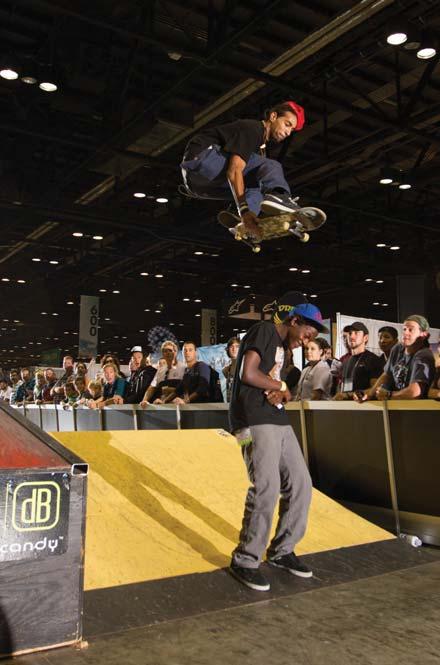

January’s Surf Expo was well attended, and here are just some of the highlights. Our thanks to Jungle Jim Kuiack and Buck Buchanan, who represented both AXS Longboard Retailer and

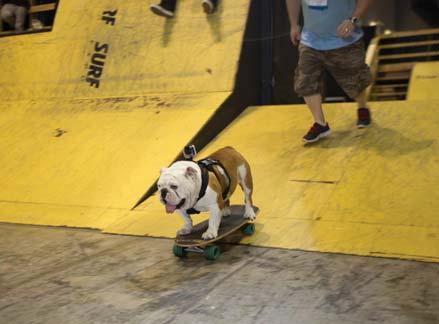

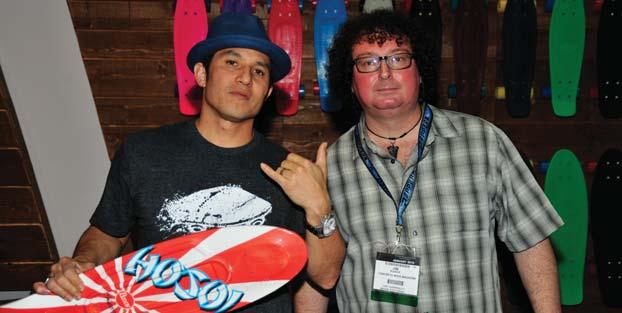
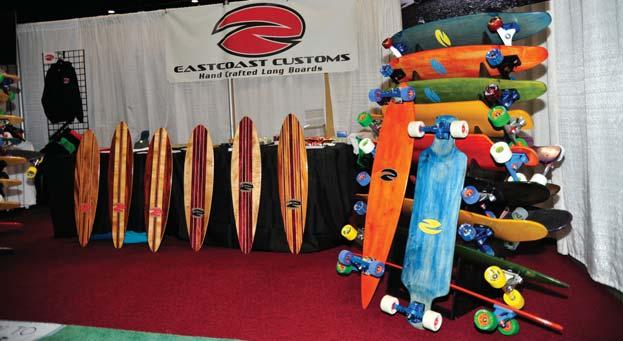
Wave magazines. AXS



AXS LONGBOARD RETAILER | SPRING 2013 34 TRADE SHOW By AXS Staff
Concrete
Our very own Jungle Jim with legendary skater Christian Hosoi. Christian has been causing quite a sensation with his decision to ride for Penny.
Photo: Buck Buchanan
East Coast Customs proudly displayed for the first time at Surf Expo.
Photo: Buck Buchanan
Skate legend Tony Alva exhibited at Surf Expo for the first time, to the delight of many fans.
Photo: Buck Buchanan
The skate demos were fast and furious!
Photo: Luke McKaye
Blue Sky Longboards brought Beefy, their skateboarding dog. Beefy is also a part-time model and has more than 600 likes on Facebook. He also has his own pro model.
Photo: Luke McKaye
The skatercross event proved to be a highlight. Photo: Luke McKaye

LONGBOARD THERAPY
It all began one night in 2012 at the Soho Beach House hotel in Miami Beach, Fla. I was at a gathering for a friend’s engagement when I overheard Joner Strauss talking with a bunch of our mutual friends about his most recent project. I initially tuned out the conversation because I assumed he was talking about another Board-Up Wakeboarding event, which I had attended in the past. But a particular word drew my attention back: “longboarding.” Hearing how passionate Joner was about longboarding made me even more intrigued. After overhearing him respond to someone’s inquiry about what a longboard is, I immediately remembered skateboarding as a kid and thought about how much I would like to do it again. I recalled how I had
given up on skateboarding when I was young because I couldn’t do all the tricks my friends could do; so I was glad to hear Joner mention that longboarding is more accessible than typical short-board skateboarding, since it is less focused on doing tricks and is more geared toward transport, cruising and exercise.
After asking Joner 101 questions about longboarding, I purchased a board, a Kryptonics pintail, at a local sporting goods store. I was immediately intrigued with my first longboarding experience. At first I had to adjust to riding again, but I got the hang of it relatively quickly and began riding a few times a week after work and on the weekends. The more I rode, the more I began to notice some positive changes.
•I noticed an increase in my overall athletic abilities, which was reflected in the improvement of my skills as the quarterback for a competitive flag football team.
•I started to see longboarding as a way to spend more time outdoors and be present with the environment.

•I felt more joyous, energized, confident and centered.
•I felt more relaxed in both mind and body.
•I was able to challenge myself each time I rode — so I felt accomplished after every ride.
•And when I wasn’t longboarding, I was always thinking about it and wanting to be back on my board.
I started to wonder why all these changes were happening. Was this yet another new venture that I would begin but not finish? Or was this something that would stay in my life?
To give you some background about my occupation, I am a Licensed Marriage and Family Therapist (LMFT) and Certified Clinical Hypnotherapist (CCH). I own a private practice in North Miami Beach, where I work with individuals, couples and families of various ages. Clients come to me for support with the hope of discovering solutions to problems with anxiety, stress, depression, terminal illness, grief and loss, pain management, substance abuse, physical and sexual abuse, insomnia, phobias, eating disorders, confidence, focus, relationships and more. As you can imagine, I have considerable responsibility in my day-to-day work with clients.
My job is extremely rewarding and humbling, but it can also be tiring and stressful at times. I began riding at night to calm my mind and release any stress I had taken on throughout the workday. Once I realized how successful this was for me, I wanted to share with others what longboarding has to offer. I became curious about who else might have similar experiences. After searching the Internet and reading different forums and articles, I realized that tons of people had discovered how therapeutic and helpful longboarding could be.
I arranged to meet with Joner for lunch to discuss my discovery and hypothesis on longboarding and therapy. When I told him I
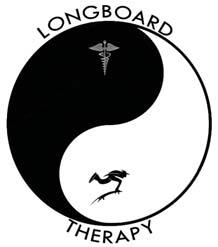
AXS LONGBOARD RETAILER | SPRING 2013 36 THINK DIFFERENT
By Isaac Farin
Isaac Farin shares the stoke of longboarding with numerous people.
thought there was something healing about longboarding, he agreed without hesitation. He explained that longboarding involves a “flow” and “stoke” that are absolutely healing, and he told me he had no doubt that others would love to share their healing experiences with me. We then spent an hour brainstorming ideas about the next step we would take, finally deciding to work together on developing something called “Longboard Therapy.”
Joner and I developed two components of Longboard Therapy: I searched for a way to include the action-oriented sport of longboarding as an intervention in my work with clients, and Joner continued to grow and expand the International Distance Skateboarding Association (IDSA). According to Joner, “The goal of the IDSA is to make sure that people see skateboarding as organized, safe and as a viable source of transportation, via events, clinics and races, with hopes of spreading the stoke to the community at large — to position longboarding as one of the most accessible sports around.”
Together, Joner and I are spreading the word that there is a healing aspect in longboarding and that the growing longboard community is entirely inclusive and welcoming. Joner suggested that we conduct a series of interviews with people who could assist us in our endeavor. He set up our first interview phone conference with Don Tashman from Loaded Boards.
Don was generous and cooperative, sharing his appreciation of both components of Longboard Therapy and what they have to offer. He related to many of my therapeutic views on change and agreed with me about the importance of using both mind and body to create change. He also thanked Joner for all the hard work he had put into the community, calling him an innovator. Don shared many interesting perspectives and insights on flow, stoke, the expanding of stoke, the breaking down of fear and the long-term potential of the longboarding community. I was particularly enlightened when he shared his view on stoke, linking it to an idea he read in social psychologist Erich Fromm’s 1956 book The Art of Loving. Don explained, “Stoke is a feeling of a pure sensation that you want to share — because it is natural to want the best for another person without condition.” He also said, “Stoke is a spark of infinity, and we all have the potential to be infinite. Stoke is challenging yourself in your own way while gaining a sense of control and pushing its boundary. It is very personal, so find your own flow.”
Although Don's personal story is a great one, this was clearly more than just an interview with a man who makes longboards. This was a conversation with someone who truly believes that longboarding has infinite healing properties and who is extremely passionate about sharing this belief with others. This conversation was exactly
what I needed to begin formulating my ideas about the relationship between psychotherapy and longboarding. Don’s ideas about the mind and body concepts of stoke and flow were very consistent with my therapeutic approach, which I call Solution Informed Mindful Therapy (SIMT). This approach adheres to the belief that clients have resources to discover solutions to their problems within themselves. It is based on the notion that the present moment has a great deal of healing to offer, and that linking both the conscious and unconscious mind can lead to holistic change.
After talking to Don and reflecting some more on my ideas, I created a plan to incorporate longboarding as an intervention with particular clients. In learning how to longboard, I came to understand that it involves developing balance, focusing intently on the task at hand in the present moment, learning to let go in order to become one with the board, learning to get back up after falling, and taking on new challenges that arise in the environment. This seemed to me like a parallel process to life, which requires learning how to balance different emotions, developing a relationship with the present moment, learning how to let go of things that are no longer relevant, taking calculated risks toward making change and facing fears and challenges. I hypothesized that if these concepts were understood and practiced through a combination of longboarding and traditional talk therapy, it would lead my clients to improve in some of the following areas:
•confidence
•focus
•a sense of physical and mental balance
•resilience
•patience
•joy
•the ability to address fears and challenges
•the ability to deal with anger, stress and problematic behaviors.
My first Longboard Therapy client was Antonio*, a 47-year-old man who first sought counseling when his wife passed away after a yearlong struggle with cancer. My work with Antonio started with a few sessions in the office setting. We spoke about how he could examine the pain from his loss and — when he was ready — make one small change at a time in order to become more hopeful. When I described Longboard Therapy to Antonio, he let me know he
wanted to try it out, since it would allow us to have our sessions outdoors. He had no prior experience with skateboarding, but he was eager to explore how the exercise of longboarding could help him move through his grief. Antonio and I worked together for seven sessions, which I conducted in both the office and outdoor settings. In our last session together, Antonio shared with me that Longboard Therapy had helped him manage his emotions, release stress, focus on the present, accept his pain and sadness, begin the healing process and rediscover his love of sporting activities.
Since working with Antonio, I have conducted Longboard Therapy with several other clients of various ages, levels of longboarding experience and therapeutic issues. I typically begin Longboard Therapy sessions by leading the client through a mindfulness breathing meditation while we both stand on our boards on the grass. The intention behind this exercise is to help the client become one with the board and the surrounding environment. Once I’ve taught the client the fundamentals of longboarding, we take a series of silent rides, after which we sit together and discuss the experience. We talk about the small changes they notice in each of their rides and discuss how they can notice small changes in other areas of their lives. After more challenging rides, I lead the client in a discussion about facing fears and overcoming obstacles. The combination of traditional talk therapy with longboarding — a sport that involves getting centered, becoming focused and establishing a mind-body connection — helps clients experience and enact solutions in dynamic new ways. AXS
* The name of the client has been changed to maintain confidentiality.
Isaac Farin is a Licensed Marriage and Family Therapist (LMFT) and Certified Clinical Hypnotherapist (CCH) who owns and operates Isaac Farin Therapy LLC in North Miami Beach, Florida.
SPRING 2013| AXS LONGBOARD RETAILER 37
Jonathan “Joner” Strauss is the founder of the International Distance Skateboarding Association (IDSA).
After searching the Internet and reading different forums and articles, I realized that tons of people had discovered how therapeutic and helpful longboarding could be.
Bud Stratford
THE GREAT DIVIDE
As an “industry watcher and commentator,” I found last fall’s Agenda show particularly interesting — mostly because the feedback that I heard out of it was so incredibly un-interesting ...
The one thing that I did hear — and I actually heard it quite a few times, from multiple sources — was in regards to the trade-show floor plan itself. From what I’ve heard, the floor plan, generally speaking, had all of the “street” brands on one side of the trade show and all of the “others” (meaning, the “longboard” brands, the “slalom” brands, the “cruiser” brands and the rest of the brands that defy labels or categorization, but definitely aren’t “street brands”) at the opposite end of the show. The most comprehensive commentary that I read about this issue came from Jeff Harbaugh. You can read it here, if you’d like: http://www.jeffharbaugh.com/2013/01/08/trade-show-season-or-hiho-hi-ho-its-off-to-sell-we-go/
I found Jeff’s idea of a “Great Divide” mirroring my own thoughts and concerns about the current state of skateboarding. This divide doesn’t seem to apply to “just” trade shows, though. It also seems to exist within, and among, our retailers — and it continues through to the communities of skaters themselves. Indeed, if you believe anything that you’ve ever read on the Internet — especially skateboard forums — you’d probably start believing mighty quick that “skateboarders” (street skaters), and “longboarders” (longboarders) are actually two entirely different species that more than likely come from different planets, that have absolutely nothing in common at all, that would never, ever be caught dead commingling. And what’s more, that they might even spend more time at war with each other on message boards than they might actually spend riding skateboards
I remember Dave Hackett telling me some time ago that “a skateboard,” accurately defined, is a plank of some sort (a deck), with two trucks and four wheels, that is intended to be ridden while standing upright upon it. Now, I don’t remember the conversation verbatim (I don’t remember anything verbatim anymore, cursed as I am with this damned middle-age-onset Alzheimer’s that I’m rocking over here), but that was pretty much the gist of Hackett’s position. And given that “The Hackman” is rarely incorrect about anything, I would have to assume that he’s not incorrect about this, either.
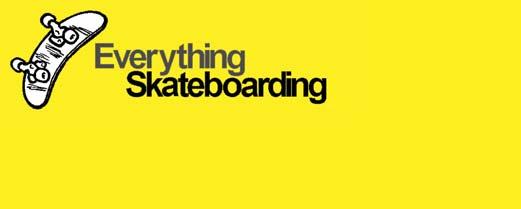
But if Hack is indeed correct, that means that we not only have a “Great Divide” in skateboarding, but that we have an incredibly arbitrary “Great Divide” that has no basis at all in fact, reason or practical utility. Put in “Bud Stratford”-type words: It’s dumb.
I wrote a piece last year in which I boldly claimed that “street skating,”
“longboarding,” “vert skating” and every other form of skating, for that matter, would soon start to blend together, creating new, unique and interesting “hybrids” of skateboarding quite unlike anything we’ve ever seen in the past. Not too long after I wrote that piece, Michael Brooke published a photo in Concrete Wave of a longboarder boardsliding a handrail, which very nicely proved my point. Thanks, Mikey! Because photos like that ultimately challenge us all to ask ourselves the obvious questions: Is that kid a street skater or a longboarder? Is that board a bona fide “longboard,” as Erik Basil might define it? Or is it merely a street board stretched out to longboard dimensions? The answer, of course, is probably “both” and yet “neither” at the same time.
And here’s the rub: It doesn’t even matter in the first damned place. The only thing that really matters is that kids enjoy skateboarding — however they choose to interpret it. Because kids that enjoy skateboarding — however they choose to do it — will also support our industry infrastructure for a very, very long time. Which is obviously really good for our industry. On the other side of the coin, kids that are implicitly told that there are “right” and “wrong” ways to be a skateboarder, and that their way might be less “legit” than somebody else’s prejudiced, narrowminded perception of skateboarding, probably aren’t going to enjoy skateboarding very much.
So, for our industry to foment — or even worse, implicitly endorse — this “Great Divide” perception within the halls of one of our standout trade shows is really quite self-defeating. And that’s unfortunate. A “leader” in this industry would be able to see this, and to make changes accordingly. Leadership dictates that the wisest course of action here would be to present all types and forms of skateboarding as a comprehensive yet diverse united front, with the sole aim of introducing and welcoming new participants. Put another way, “growing our sport” by allowing kids the freedom to use their imaginations and to interpret skateboarding however they choose to, with the full support of the industry that supposedly exists to support them. AXS
BUD’S COLUMN
By
AXS LONGBOARD RETAILER | SPRING 2013 38
Bud Stratford is the editor of Everything Skateboarding Magazine. everything skateboardingmagazine.blogspot.com

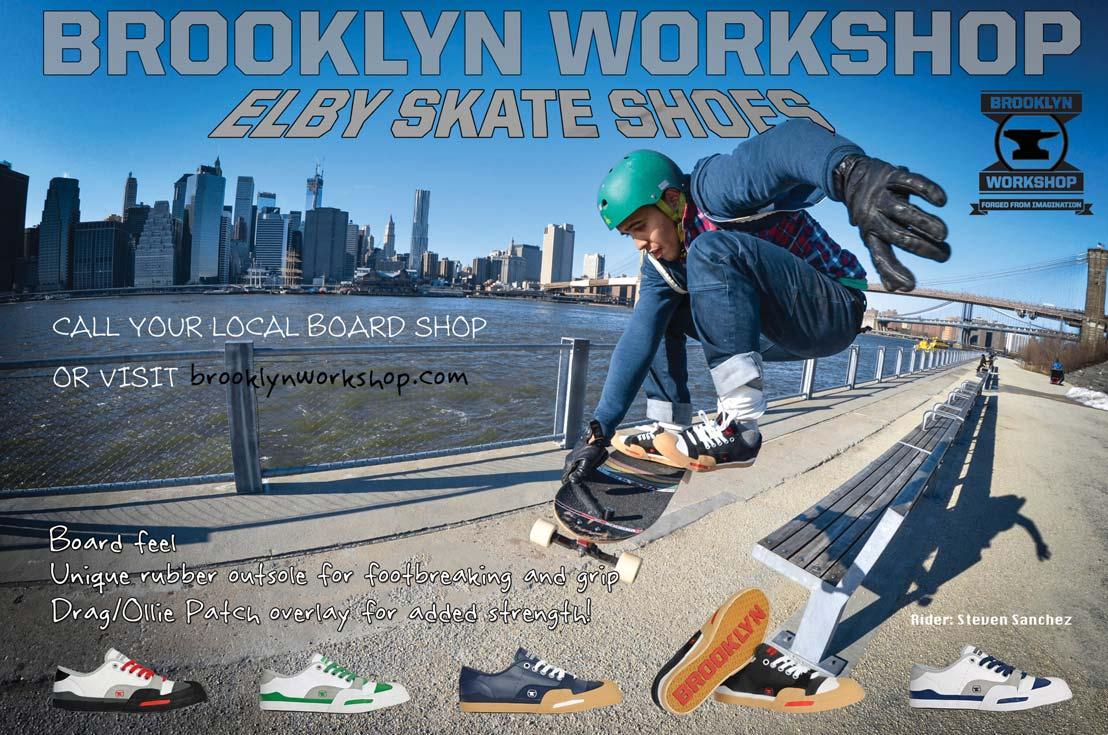
SPRING 2013 | AXS LONGBOARD RETAILER 39
By Josh Friedberg, IASC Executive Director
INTERNATIONAL ASSOCIATION OF SKATEBOARD COMPANIES UPDATE
I’ve been on the job at the International Association of Skateboard Companies (IASC) for a little more than two years now. The question I get over and over again after telling people that I’m the executive director of the nonprofit trade association for the skateboard industry is, “Oh, so what do you guys do?”
IASC exists to promote skateboarding, increase participation, educate and save our members money. We’ve got some great programs and initiatives in place to accomplish our goals. We’ve even managed to break them down into hashtags so we can communicate our message more clearly:
• #accidentinsurance
• #goskateboardingday
• #skateboardingsummit
• #justoneboard
• #diyordie
• #skateboardinghalloffame
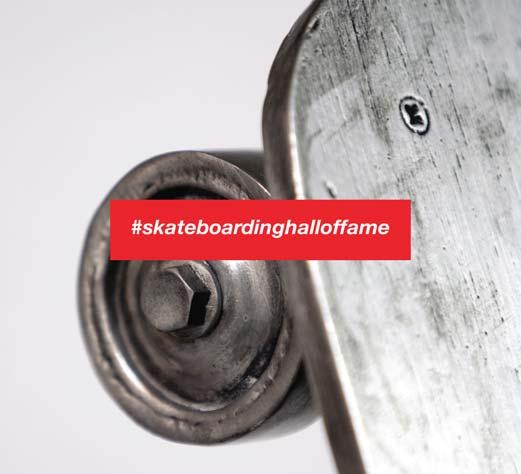
• #industryresearch
All of these programs exist only through the support of our 80-plus member companies, which represent more than 100 skate brands, and the time and energy that members of our board of directors volunteer to IASC.
“IASC is an invaluable asset to the skateboarding community. The organization’s goal of supporting the sport, its athletes and member companies makes it the only place where companies can work together for the greater good of skateboarding.” — Steve Lake, IASC board member and CEO of Sector 9
The depth and variety of experience on our board of directors is incredible, and the opportunity to meet with such an amazing group of skateboarders on a regular basis, who dedicate time in their busy lives to further the cause of skateboarding, still freaks me out a bit. After all, I’m still just a kid who grew up skating in Kansas in the ’80s. Our current board consists of Chairman of the Board Don Brown, senior VP of marketing at Sole Technology; Vice President Glenn Brumage, director of business development at Wabsono International; executive committee member Bod Boyle, CEO of Dwindle Distribution; executive committee member Frank Messmann, CEO of Black Box Distribution; Monica Campana, publisher of Transworld Skateboarding; Tim Gavin, founder of Podium Distribution; Steve Lake, CEO of Sector 9; Hunter Muraira, global brand manager of Nike Skateboarding; Johnny Schillereff, founder and CEO of Element; Tod Swank, founder and president of Tum Yeto; Dave Swift, founder and editor of The Skateboard Mag; Jeff Taylor, SVP of global marketing at DC Shoes; Steve Van Doren, VP of events and promotions at Vans; and Per Welinder, president and CEO at Blitz Distribution.
One of the accomplishments I’m most proud of in my time here so far is getting IASC approved to offer Aflac accident insurance to our members. I believe we’re the only trade association in any of the action sports to offer this kind of benefit to our members.
Early on I was tasked with finding a way to support skateboarders when they get hurt. With seven of our board members being former professionals themselves, they understand what it means to be out risking life and limb for the benefit of their sponsors. Most team riders are independent contractors and therefore ineligible for health care benefits from the companies they ride for, so there has always been a Catch-22 in place when it comes to providing any type of coverage.
Tim Gavin introduced me to Michael Fishman, an Aflac agent and friend of his, about 18 months ago and we got the ball rolling. It took a lot of work to get everything approved, but thanks to the dedication of Michael and a group of people at Aflac who believed in what we were trying to accomplish for skateboarders, we succeeded. We were able to secure a significant discount for our group rate and eliminate the pre-existing conditions clause for IASC members. All this basically means is that if you want coverage, you can get it. We didn’t want to limit this amazing benefit to sponsored skaters or IASC member companies, so we set up an IASC membership category for individuals that allows access to the Aflac coverage. For less than $500 a year, including your IASC membership fee, anyone* can enjoy the benefits of Aflac accident insurance through IASC.
AXS LONGBOARD RETAILER | SPRING 2013 40 INDUSTRY INFO
Aflac’s accident insurance isn’t health insurance, but we believe it’s a big step in the right direction. Aflac’s plan is supplemental insurance that pays you cash directly to use for any of your expenses if you get hurt. Spend 24 hours in the hospital; the plan pays you $1000. (This is just one example of a covered benefit. For the full listing of benefits and information on enrolling, please visit http://theiasc.org/aflac-accident-insurance.)
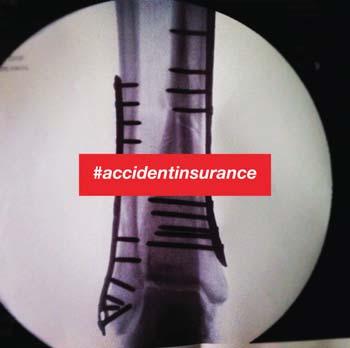
On the horizon is the Sixth Annual IASC Skateboarding Summit, May 8-10, 2013, at the Sheraton Park Hotel in Anaheim, California. The IASC Summit has become the premier education and networking event in the skateboarding industry, and this year’s program is going to be outstanding. For more information, visit http://bit.ly/2013iascsummit.
The Fourth Annual Skateboarding Hall of Fame and Icon Awards Ceremony takes place on May 9, 2013, as part of the IASC Summit. The 2013 winners are:
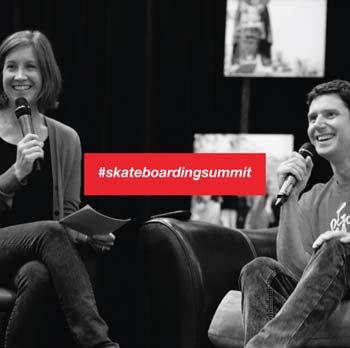
Inductees
1960s: Woody Woodward
1970s Era One: Tom Sims
1970s Era Two: Alan “Ollie” Gelfand
1980s Era One: Rodney Mullen
1980s Era Two: Christian Hosoi
1960s Female: Wendy Bearer Bull
1970s Female: Laura Thornhill Caswell
Icon Awards
Warren Bolster
NHS – Richard Novak (founder), Jay Shuirman (founder), Bob Denike (1987), Tim Piumarta (1977), Jeff Kendall (1984) DEVO
Huge congratulations to all of this year’s honorees! Last year more than 400 people packed the event to see their favorites receive skateboarding’s highest honor. It’s going to be an amazing evening, so get your tickets now before they sell out. http://bit.ly/2013shof
The last thing I’m going to touch on for today is Go Skateboarding Day. What began in 2004 as Don Brown and some friends skateboarding on the pier in Huntington Beach has grown into a globally recognized holiday celebrating the spirit of skateboarding, with millions of skaters participating around the world.

June 21, 2013, is the 10-year anniversary of Go Skateboarding Day, and IASC has partnered with the Smithsonian’s Lemelson Center at the National Museum of American History to put on a two-day event called Innoskate, a celebration of innovation in skateboarding. The program and speakers will be finalized by the time you read this, so please check our website for all the information. Apparently the Girl Scouts had 70,000 people attend their celebration there. I think it’s only fitting that we get 100,000 skateboarders to Washington, D.C., for the 10year anniversary of GSD. That’s right, skateboarding being celebrated in the shadow of the White House on the Mall in Washington, D.C. It’s going to be one for the history books. We hope you can join us!
So I hope that gives you a little clearer picture of who IASC is and a few of the things we do. True success for us is everyone in the skateboard industry working together for the good of skateboarding. Please consider an IASC membership for you or your company; together we can make a difference for the millions of skateboarders around the world. #thefutureisnow, and we hope you’ll join our cause.
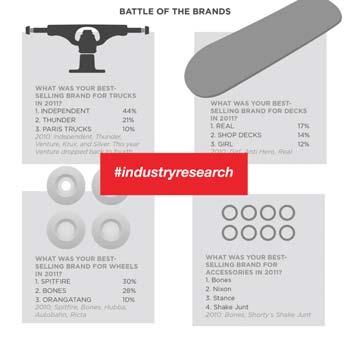

I’ve taken enough of your time already, so I’m going to leave it up to you to explore our Just One Board, DIY or Die and Industry Research programs on the new IASC website at http://theiasc.org. They are amazing programs, and it’s worth your time, I promise! AXS
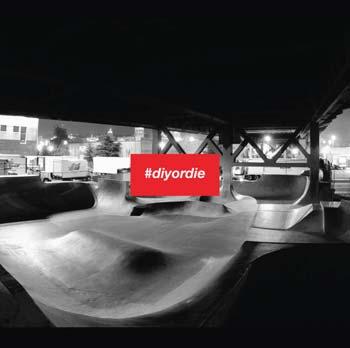
SPRING 2013| AXS LONGBOARD RETAILER 41
*Coverage is currently limited to the United States, but we are exploring international options.
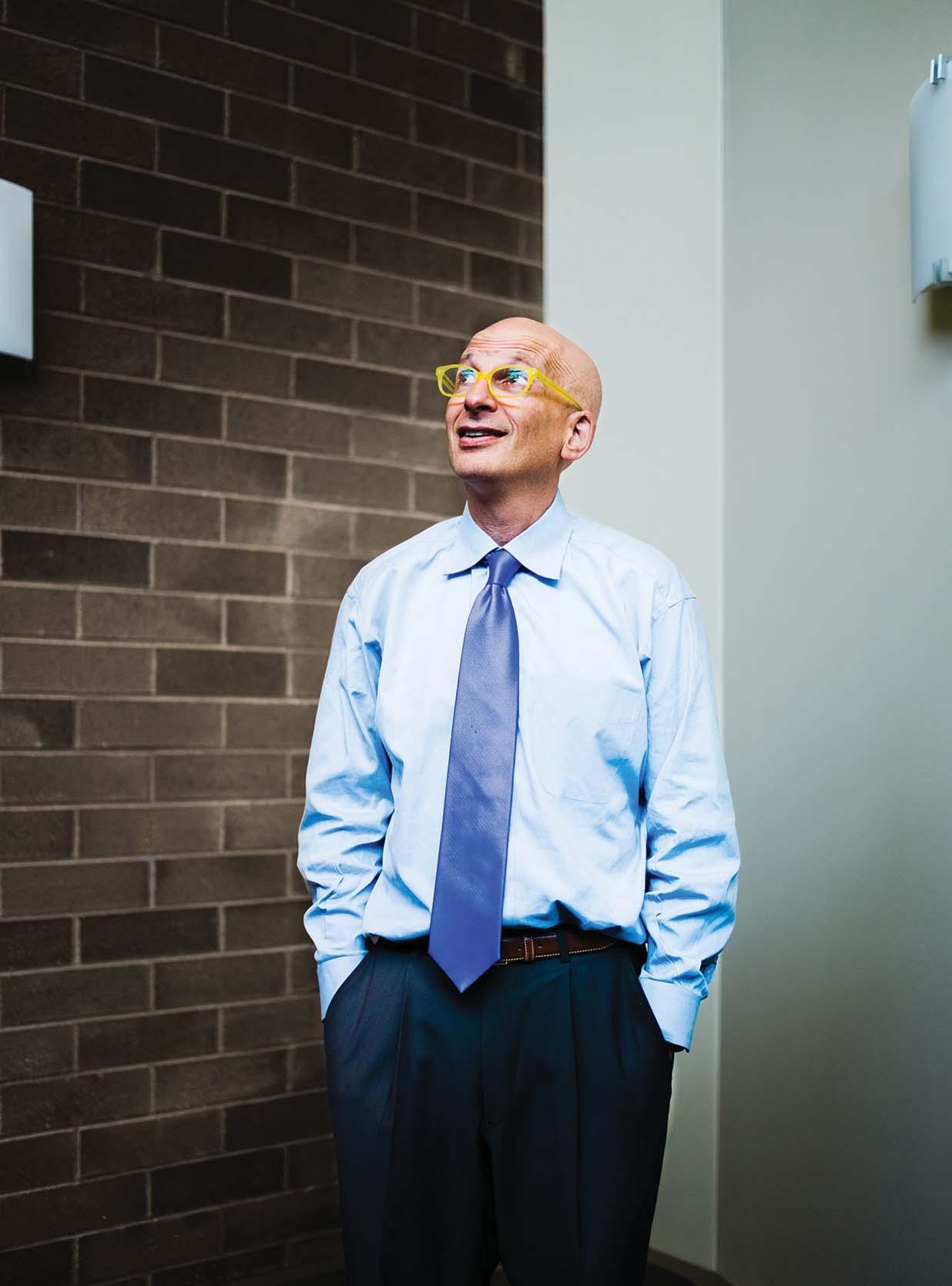
AXS LONGBOARD RETAILER | SPRING 2013 42 INDUSTRY BRANDING
By Michael Brooke
Seth Godin
THE WORLD
ACCORDING TO SETH
Ifirst discovered marketing guru Seth Godin in the spring of 1999. I was working at Warwick Publishing trying to sell advertising for a wine magazine. For those who can remember, the late ’90s were pretty heady days. The Internet had gone bananas and there was a sense of infallibility in the air. Looking back, it’s hard to believe that AOL merging with Time Warner would end in disaster. Then again, for a lot of people, the idea of pets.com losing $300 million in investor capital in just over two years seemed ridiculous. But that is exactly what happened.
Seth Godin has published 18 titles in his writing career. While space won’t allow us to feature all of them, here are some my personal favorites.
While at Warwick, I spied one of Godin’s books on a bookshelf. It was called Permission Marketing. The root of his thesis was pretty simple: “Turning strangers into friends and friends into customers.” Many skate shops excel at this and have done it for years. That kid who comes in looking to loosen his trucks or needs an extra bolt? That’s at the heart of an independent skate shop. Even just hanging out at a skate shop can mean the world to most young skaters.
What’s interesting about Godin is that he was definitely ahead of his time. Permission Marketing is almost 14 years old, and many of the techniques he discusses in have become standard operating procedure. But there was something refreshing in the way the book presented its ideas that inspired me. The writing wasn’t complex, but it wasn’t dull and dry like many previous marketing books I had read. I felt I could relate to what he was presenting.
When Godin released his next book, he did something quite extraordinary — he gave it away for free. It was one of the world’s first ebooks and went on to become one of the most downloaded books of all time. Unleashing the Ideavirus became an instant smash simply because you could get it for free. The irony wasn’t lost on folks — what better way to spread a book about spreading ideas than by giving it away for free? Almost overnight, Godin had managed to find his way onto hundreds of thousands of hard drives.
While there were some who didn’t agree with Godin, he offered a number of extremely valuable insights. The key thing I realized about his
ideas was that they were perfect for small businesses. Starting up International Longboarder Magazine on $50 worth of phone calls meant I had zero budget for advertising. Mass media is still a very effective advertising medium. People still spend a huge amount of time watching television. However, a lot of folks, including me, have been somewhat jaded by advertising. It’s never been about big numbers for me. I always believed you could get more accomplished with 100 people who’d die on their sword for you than 10,000 who don’t care.
Godin’s remarkable ability to weave together a number of ideas has repeatedly given me the confidence to try to make something happen. While I understood the concepts of Permission Marketing and Ideavirus, it wasn’t until he released Purple Cow that things really crystallized for me. The book was published in 2003, and it deeply resonated with me. The idea of creating a “remarkable magazine” that was unlike anything in skateboarding was something I picked up on.
Still, although Purple Cow garnered a huge amount of attention and became one of the top business books of the year, people were divided. Business analyst Chris Reich wrote a review of the book that perfectly summed up these conflicting views.
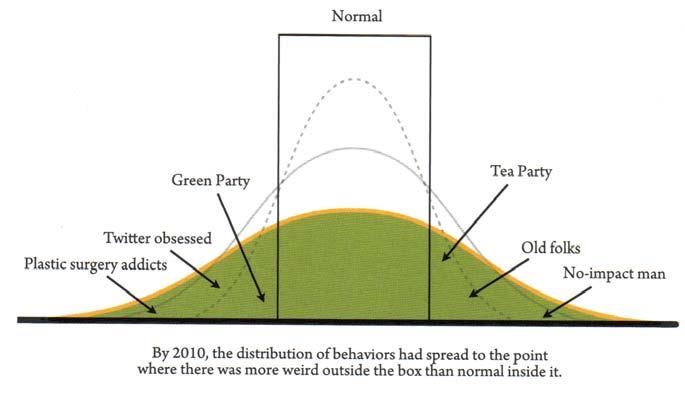
“There seem to be two camps reviewing this book,” he wrote.” One says that it is brilliant and their favorite book of all time. The other says the book is shallow and void of original ideas. Both
are right … and wrong. The main idea of the book is spot on. If your business is not unique, it will be invisible. Marketing an invisible business is tough.
To the critics who say the basic idea is simple and therefore not groundbreaking, I agree. But Godin manages to clarify a simple, very important idea that most business owners overlook. There is an elegance to his clarity. Godin writes books that have a single core idea. He writes in a conversational tone. His books are short and readable.
There are two categories of business books. There are the big serious tomes about how somebody saved ABC Corporation from disaster and made billions in the process. And then there are books for the rest of us. Purple Cow is a “rest of us” book. Years after reading the book, I still struggle with developing my own purple cow. It isn’t easy.”
I think Reich is correct — most people don’t read, and most businesspeople who do pick up a marketing book rarely finish it. Even fewer actually put the ideas into action. But if Godin’s goal was to motivate people to take action, I think he definitely succeeded.
In the fall of 2008, Godin released Tribes: We Need You to Lead Us. It combined the concepts of connecting people and taking charge to lead the way forward. Godin’s contention was that anyone who wants to make a difference now has the tools to do so; it’s simply a matter of stepping up and leading.
Building upon this concept was Linchpin, which Godin published in 2011. In his world-
SPRING 2013| AXS LONGBOARD RETAILER 43
Dan Gesmer of Seismic.
By Michael Brooke
FROM HIS BLOG
If you visit sethgodin.com and click on his head, you’ll be taken directly to his blog. Here are two excerpts we thought would resonate with readers.
You can’t change everything or everyone, but you can change the people who matter.
Marketing is about change — changing people’s actions, perceptions or the conversation. Successful change is almost always specific, not general. You don’t have a chance to make mass change, but you can make focused change.
The challenge of mass media was how to run ads that would be seen by just about everyone and have those ads pay off. That problem is gone, because you can no longer run an ad that reaches everyone. What a blessing. Now, instead of yelling at the masses, the marketer has no choice but to choose her audience. Perhaps not even with an ad, but with a letter, or a website, or with a product that speaks for itself. And yet, our temptation is to put on a show for everyone, to dream of bestseller lists and the big PR win.
So the first, most important question is, “Who do we want to change?”
If you can’t answer this specifically, do not proceed to the rest. By who, I mean, “give me a name.” Or, if you can’t give me a name, then a persona, a tribe, a spot in the hierarchy, a set of people who share particular worldviews. People outside this group should think you’re crazy, or at the very least, ignore you.
Then, be really clear about:
— What does he already believe?
— What is he afraid of?
— What does he think he wants?
— What does he actually want?
— What stories have resonated with him in the past?
— Who does he follow and emulate and look up to?
— What is his relationship with money?
— What channel has his permission? Where do messages that resonate with him come from? Who does he trust and who does he pay attention to?
— What is the source of his urgency — why will he change now rather than later?
After he has changed, what will he tell his friends?
Now that you know these things, go make a product and a service and a story that works. No fair changing the answers to the questions to match the thing you’ve already made (you can change the desired audience, but you can’t change the truth of what they want and believe).
OPEN, GENEROUS AND CONNECTED.
Isn’t that what we seek from a co-worker, boss, friend or even a fellow conference attendee?
Open to new ideas, leaning forward, exploring the edges, impatient with the status quo … In a hurry to make something worth making.
Generous when given the opportunity (or restless to find the opportunity when not). Focused on giving people dignity, respect and the chance to speak up. Aware that the single most effective way to move forward is to help others move forward as well.
And connected. Part of the community, not apart from it. Hooked into the realities and dreams of the tribe. Able and interested in not only cheering people on, but shining a light on how they can accomplish their goals.
Paradoxically, the fancier the conference, the more fabled the people around the table, the less likely you are to find these attributes. These attributes, it turns out, have nothing to do with fame or resources. In fact, fear is the damper on all three. Fear of failure, intimacy and vulnerability. Fear closes us up, causes us to self-focus and to disconnect.
When we find our own foundation and are supported in our work by those around us, we can get back to first principles, to realizing our own dreams and making our own art by supporting others first and always..
view, everyone is an artist. But by “artist,” he doesn’t just mean someone with paint and a brush; he means anyone who does emotional work. Art, he writes, is “the intentional act of using your humanity to create a change in another person.”
In Linchpin, Godin argues that the only way workers are going to thrive is if they bring emotion to their task. “You don’t become indispensable merely because you are different,” he writes. “But the only way to become indispensable is to be different. That’s because if you’re the same, so are plenty of other people. I didn’t set out to get you to quit your job or to persuade you to become an entrepreneur or merely to change the entire world. All I wanted to do in this book was sell you on being the artist you already are. To make a difference. To stand for something. To get the respect and security you deserve. If I’ve succeeded, then you know that you have a gift to give, something you can do to change the world (or your part of it) for the better. I hope you’ll do that, because we need you.”
A lot of what Seth Godin writes resonates with me because I clearly relate to his desire for people to step out of their herd mentality and risk-averse mindset — maybe because so many view an adult skateboarder as quite peculiar that it has given me the confidence to weather the vast majority of nay-sayers. Skaters have an independent streak in their blood, and older skaters seem to carry this with them into adulthood.
As time progresses, I find that Godin gets increasingly personal with each of his books. He’s provided the foundation of how to effect change and given readers a clear instructional manual to succeed in spreading an idea. His latest book, The Icarus Deception, released in December 2012, is a vast overview of many of his concepts.
In the Greek myth, Icarus was warned by his father not to fly too close to the sun or the wax on his wings would melt. He ignored the advice — and his wings did melt, and he plunged to into the sea, where he drowned. The message was clear: Don’t fly too high; you will get burned and fail. Better to be obedient and follow what the boss says. That was the message for most of our lives during the industrial economy.
But Icarus was also told not to fly too low — or he would hit the sea. As Godin writes, “Flying too low is even more dangerous than flying too high, because it feels deceptively safe.”
The Icarus Deception celebrates the idea of nonconformity. Taking a path that few choose means that you have an opportunity to do something truly remarkable. It may not appeal to everyone, but that’s OK. If you are running your business in a way that celebrates creativity and thoughtfulness and brings meaning to life, chances are you are channeling Seth Godin.
AXS LONGBOARD RETAILER | SPRING 2013 44 INDUSTRY BRANDING
AN EXCLUSIVE INTERVIEW WITH SETH GODIN
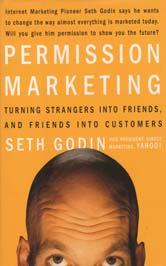

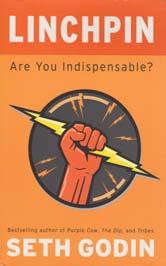
A number of years ago, I emailed Seth to tell him what I felt about his work. I was stunned when he emailed me back. We have kept up a correspondence over the years, and three years ago we met in Toronto. I knew that a one-on-one interview for AXS Longboard Retailer would delight our readership. I also asked a number of our advertisers if they had any questions. We received a few questions and Seth dutifully answered them all
AXS Magazine: First up, a skateboard question. Rumor has it you longboard. Do your kids skate too? Care to share what’s in your skate quiver?
Seth Godin: The concept of longboarding is incredibly appealing, but alas, it exceeds my grasp when it comes to physical aptitude and the primitive desire to avoid becoming road kill. I have a few longboards, but they have been borrowed/stolen/appropriated by my talented younger son.
AXS: Some retailers believe they are just there to sell stuff. You see things differently. You see art and artists in retailing. Please share your thoughts.
SG: If you sell what someone else sells, and if I’m already comfortable buying stuff by mail, tell me again why I will pay you more for what you sell?
On the other hand, if you sell what others don’t sell — if you sell advice, companionship, inspiration, connection and a community — well, there’s only one place I can buy that, isn’t there?
Many retailers hear this, shake their heads in agreement and then go right back to selling what others sell. If you’re serious about this, you’ll dramatically change who you hire, what they do and how they do it.
AXS: You ask a number of questions in your book. I think two of the most powerful ones are, “Do you care enough to fail?” and “Do I care about what you do?” This boils down to “taking action” and creating something that gets people’s attention. But for many, these are huge chasms. Your thoughts?
SG: Of course it’s a chasm, because you’ve been brainwashed all your life to do what you’re told, to not fail and to guarantee results. We’ve been bullied from a young age to fit in, not to stand out. Even in a cultural shifting environment like skateboarding, the independent members of this tribe are falling over themselves to look and act just like everyone else in the tribe.
We need you to lead us. And leading is not managing, and leading is not safe.
AXS: Do you have any skate shop stories you’d like to share? Good, bad or ugly.
SG: I think that at many specialty businesses (high-end stereo, too), there’s a weird, off-putting arrogance that comes from the combination of insecurity and “it sometimes works.” All of us at some point have bought something to please the aloof, he’s-smarter-than-me salesperson.
The Internet is not the friend of this approach. Your customers might be smarter and better informed than you are now. And they don’t need to please a salesperson to get what they want; they can just click. In White Plains, N.Y., there’s a ski shop that has an outlet for snowboards; they call it 44 Board, and they sell skateboards, too. I was blown away by their approach, their openness and their delight in interaction. Just a kudo.
AXS: Skaters are all about connection — it’s a tribe — and yet I sometimes get the feeling that commerce is trumping this connection. Is there a sustainable balance between art and commerce?
SG: I don’t think the skater community is nearly as connected as it could be. Few tribes are. And so we resort to isolating ourselves, to replacing emotional connection with physical proximity. Real connection comes with the quest, with building something and with going somewhere. The people who put on a big event remember each other for years — while those who merely attended might forget who was there in just a few weeks.
Commerce is always going to suck some of the juice out of a tribe. At the same time it gives the tribe a totem, a badge, a way to make progress technically. But as the quest kicks in, the commerce can amplify it instead of undermine it.
AXS: What do you see, long-term, for the independent retail store? Our focus is skateboard shops, but I sense that a lot of what you believe about retailing applies to skate shops too!
SG: Not good. The boring ones, the ones that merely offer a place to get stuff — we’re not going to pay extra for access. The big bookstore is already doomed.
But for a new kind of retailer — smaller, low overhead, insanely focused on what it and only it can provide — then for sure, it’s going to do better all the time.
AXS: What are you afraid of?
SG: Not honoring the privilege and the platform and the expectation that I have. Wasting the leverage.
AXS: How can we help to restore the “book discovery” that took place in brick-and-mortar bookstores that seems to be a thing of the past?
SG: I think gift stores do a good job of helping with discovery, and part of that is curation. They don’t sell everything; they sell some things, things they care about. I think the local bookstore is reinvented as a curated gift shop of books.
AXS: You like to stress the importance of reaching out to the fanatics, or the Otaku, rather than the mass market. Once you’ve captured the interest of this elusive group, what are some strategies to call them to action to start being disciples for your brand?
SG: Can I point people to [Godin’s book] We Are All Weird? It’s a short book that can answer this better than I can.
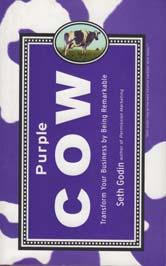

AXS: Are there any mental exercises you use to change directions in the creative process — like changing a campaign’s direction for one reason or another, or to try to keep a campaign fresh and different?
SG: I’d stop thinking about campaigns and start noticing what people are talking about. Domain knowledge and awareness of what’s going on, combined with a passion for the tribe, ought to help the campaigns take care of themselves. AXS

SPRING 2013| AXS LONGBOARD RETAILER 45
AGENDA 2013






The Agenda Trade Show hit Long Beach, Calif., in early January 2013. It was well attended, and the longboard section continued to grow. Our annual AXS/Concrete Wave Party held at Famous Dave’s had more than 150 attendees. The next Agenda: Long Beach hits July 25-26. AXS

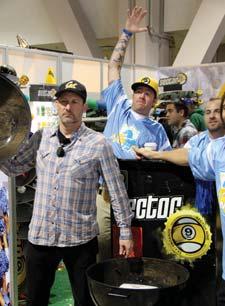


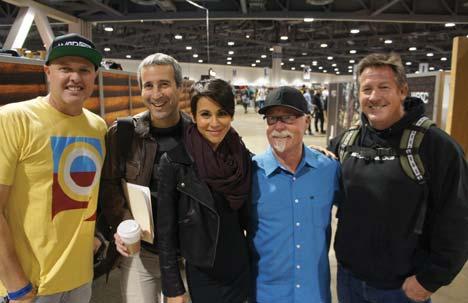

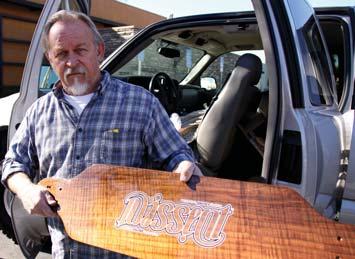
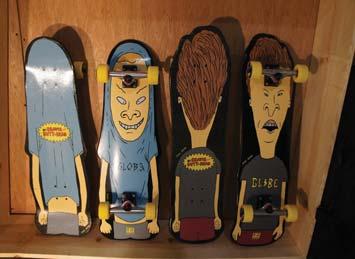
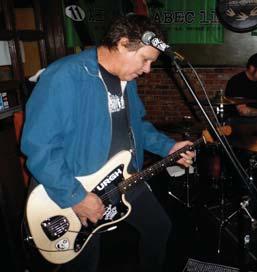

AXS LONGBOARD RETAILER | SPRING 2013 46 TRADE SHOW By AXS Staff
Longboarding for Peace gift backpacks from the over-21 BBQ party soon "migrated."
Photo: Rick Tetz
Stanton Hartsfield (L) and Jason Cohn with Surf to Skate, their exceptional chronicle of 1960s boards.
Carl Lekavich with a gorgeous Dissent deck. Photo: Rick Tetz
You just never know what you’ll find lurking at the various booths. Behold! It’s a Beavis and Butt-Head cruiser!
First-time Agenda exhibitors Richard Docter and Nathan Pauli of DB Longboards.
The Sector 9 gang brought the joy of tailgating to their booth.
Left to right: Brad Teschner of Abec 11, Mike Palm, lead singer and founder of Agent Orange, and CW publisher Michael Brooke. Photo: Joaquin Sahagun
One of the most intense experiences of the entire few days was seeing legendary punk rockers Agent Orange up close and personal at a special gig just for Agenda attendees. There was no stage, and dozens of people packed a small club in Long Beach. It was a rager! Photo: Joaquin Sahagun
Rayne's Tivohn Cox and Les Robertson in their trade-show PJs.
Famous Dave’s BBQ always puts on a great lunch, and everyone who attended our party left satisfied. Our sincere thanks to the hard-working staff.
Photo: Rick Tetz
Now this is quite a crew: LAX/Churchill's Troy Churchill, Seismic's Dan Gesmer and Jilli Bethany, Dale "Sausage Man" Smith and Syndrome's Dave Andrecht.

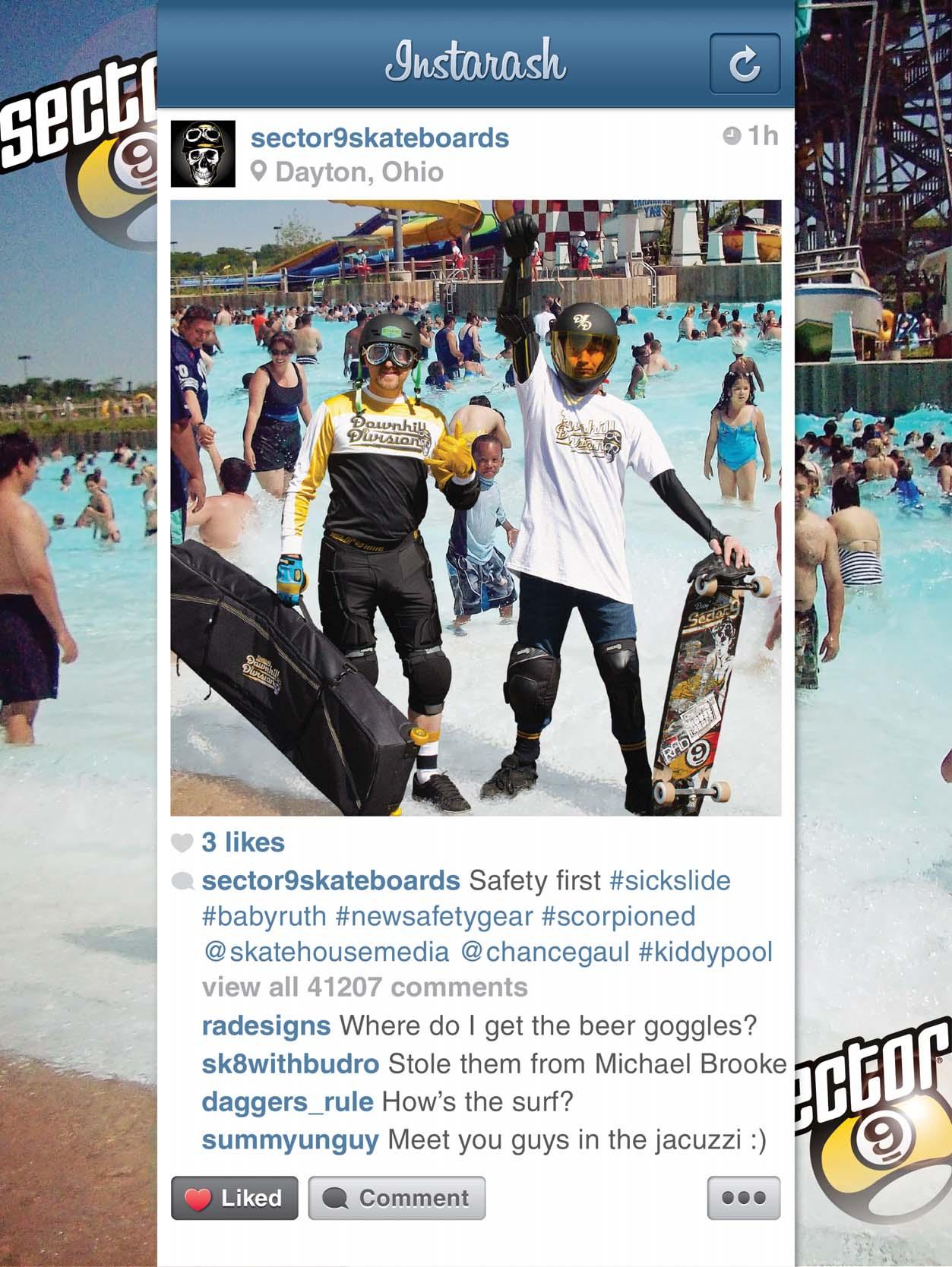

 The
The













































































 By Michael Brooke
By Michael Brooke


























































